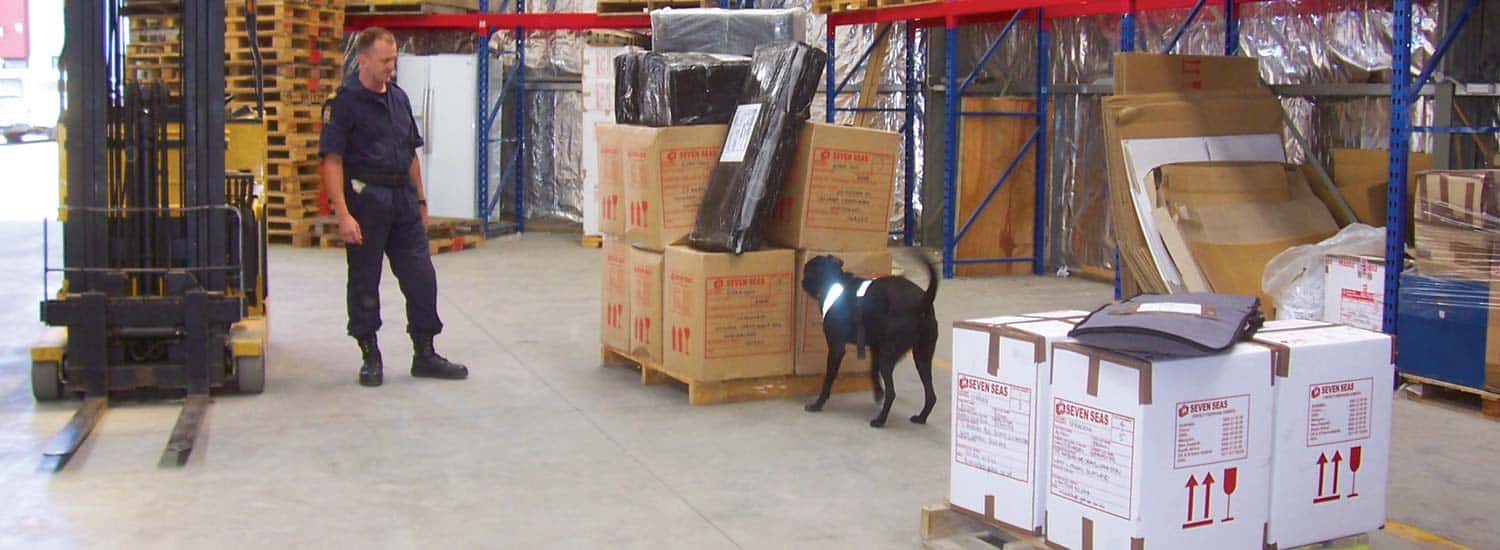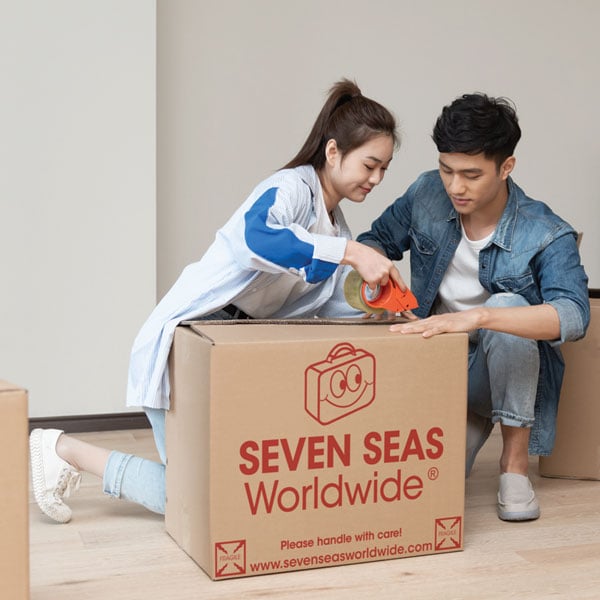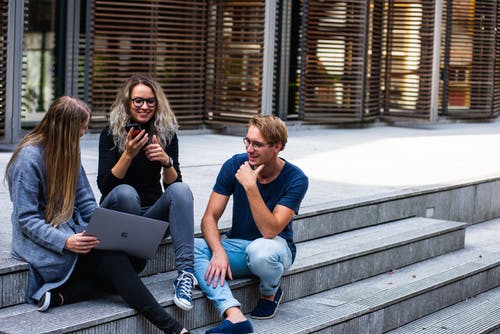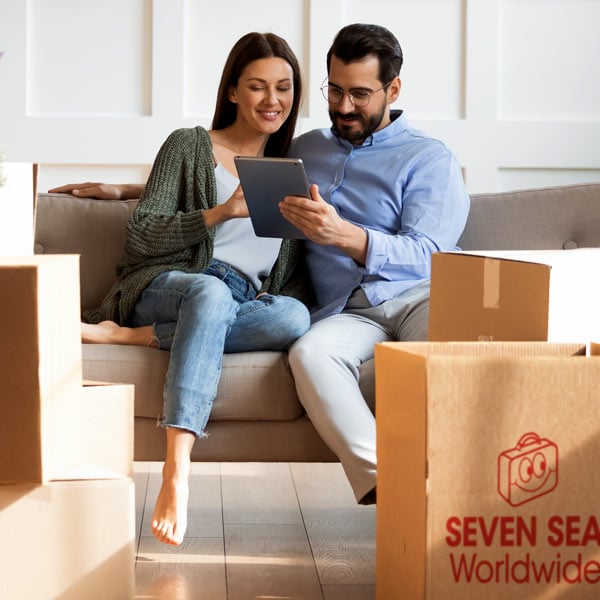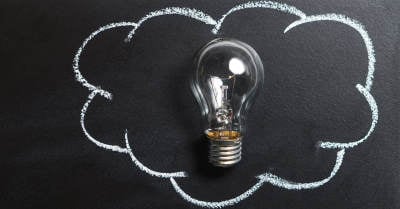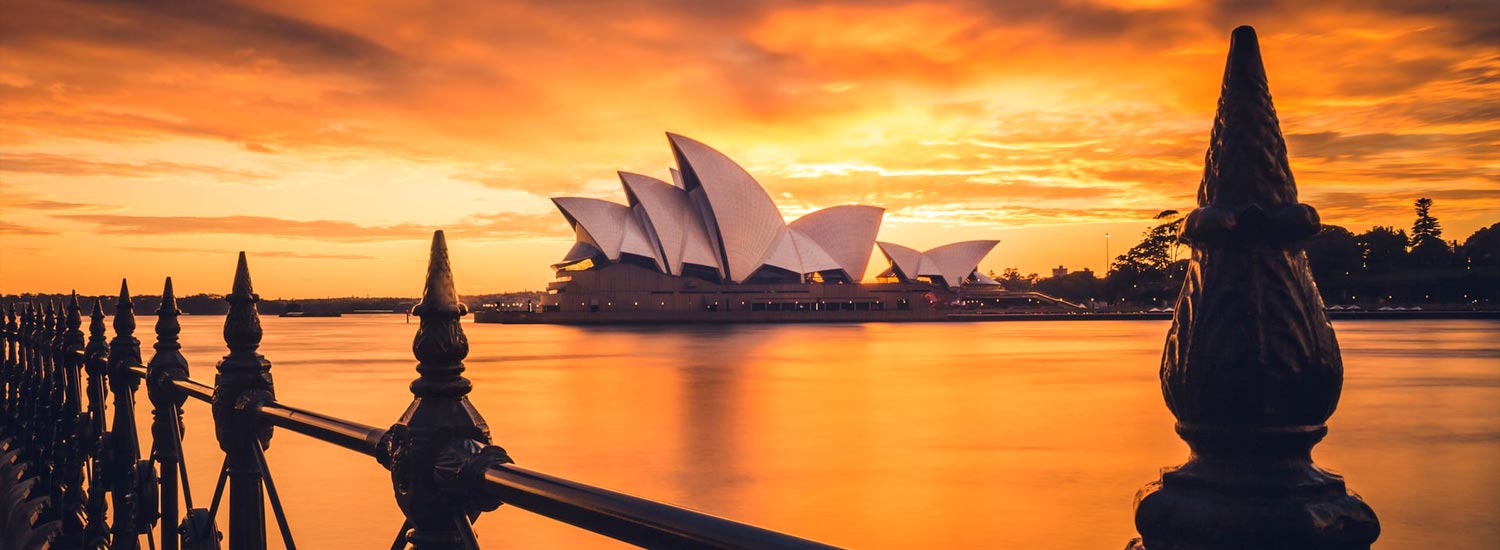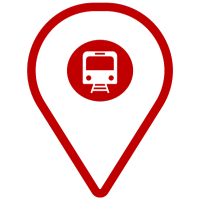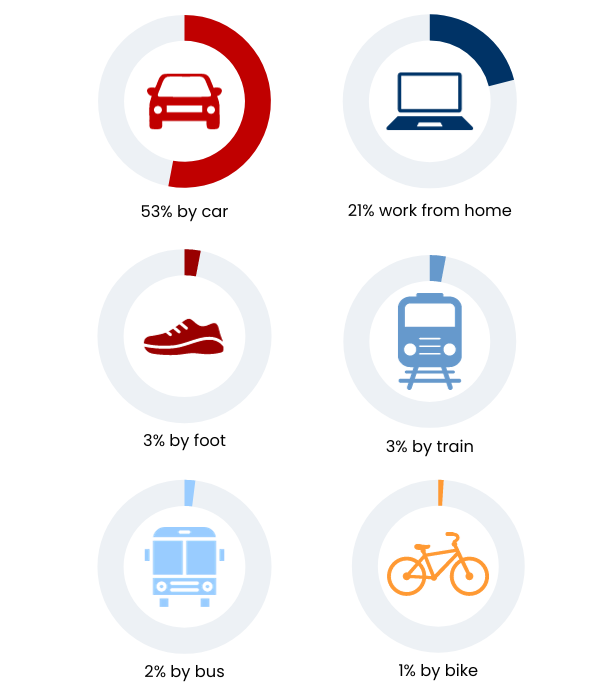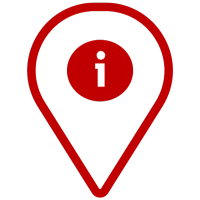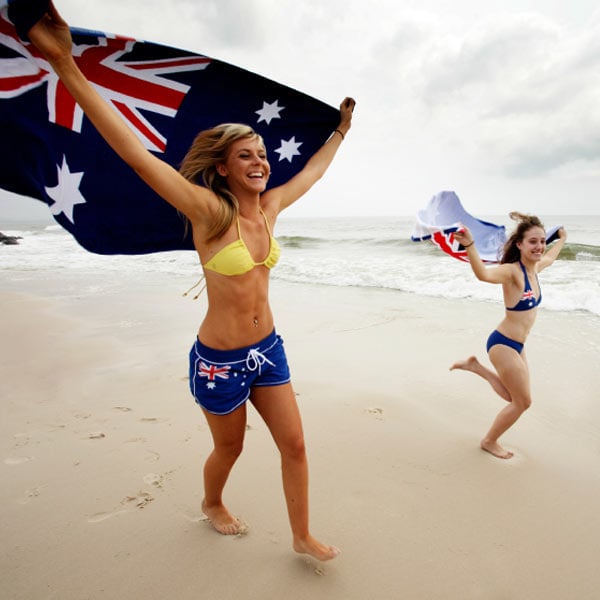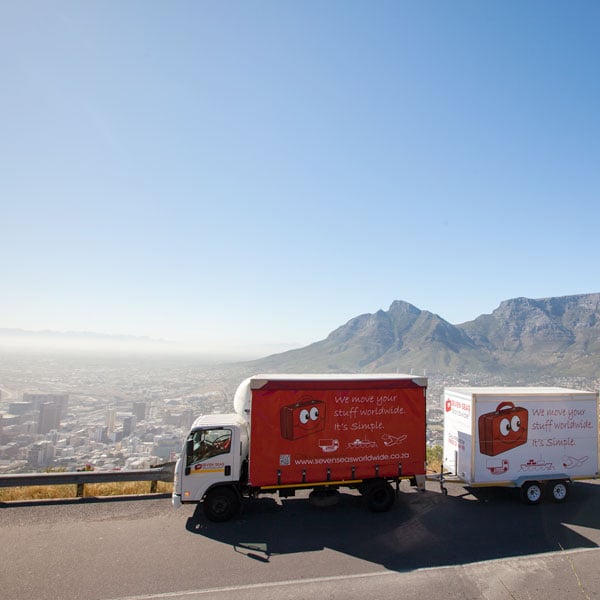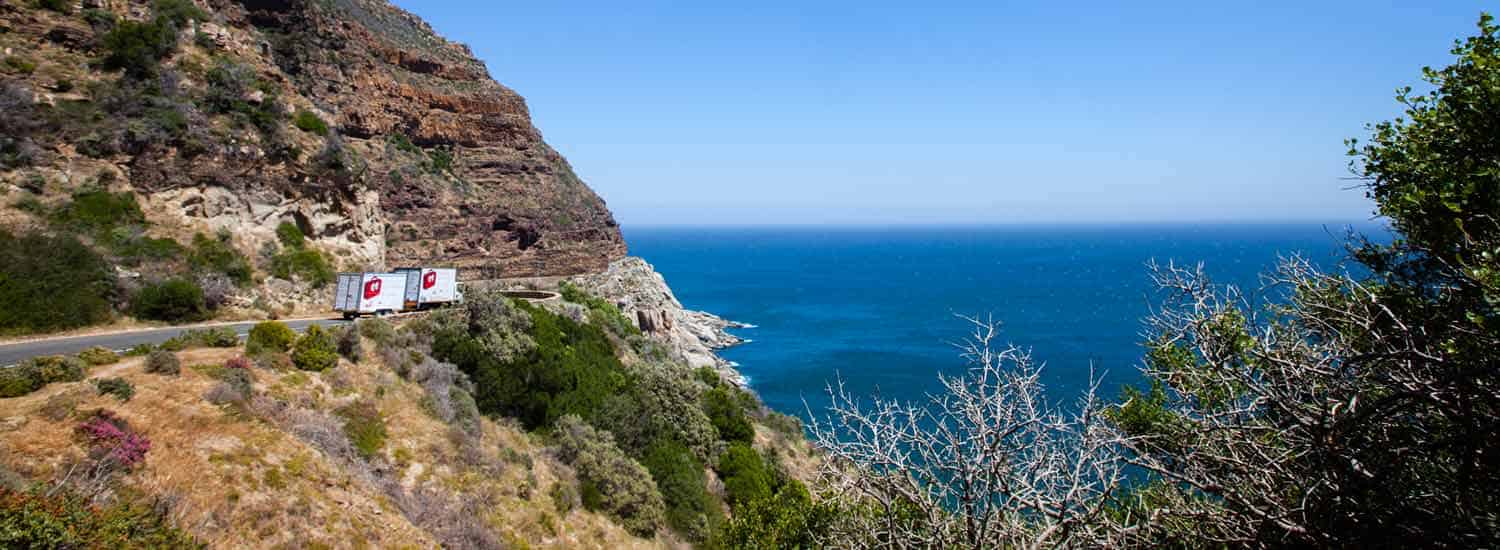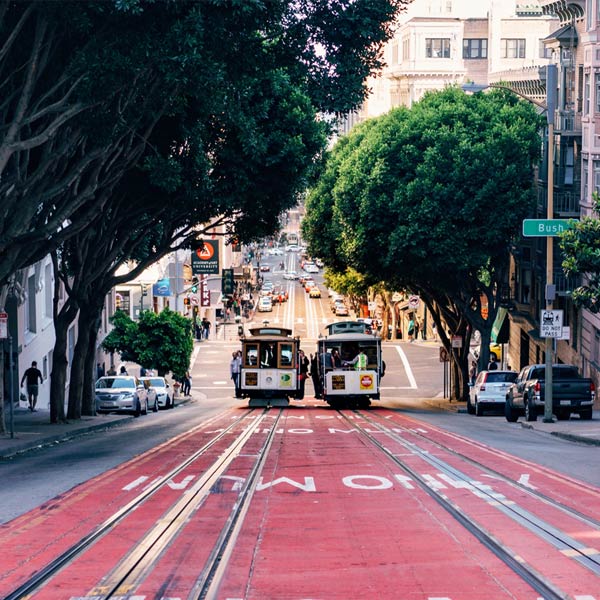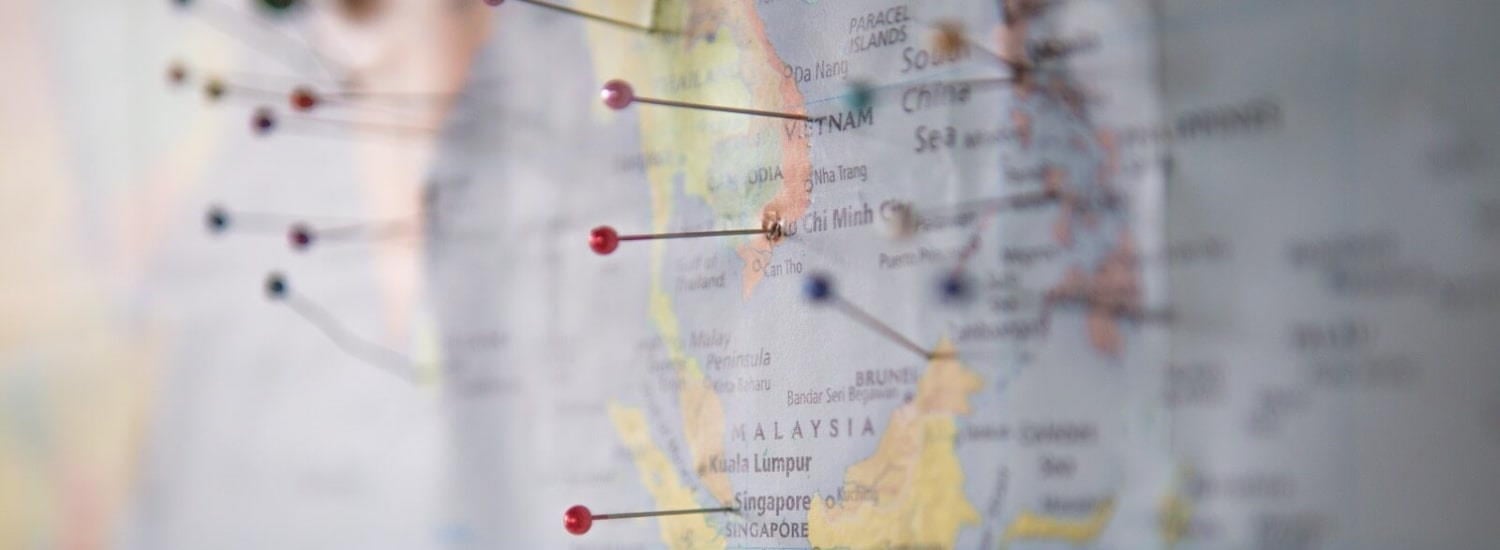Before packing, check this list of items prohibited from entering a particular country or region.
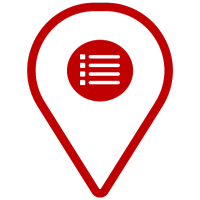
Table of contents
- Information about Australia
- Relocating pros and cons
- Applying for a visa
- Australian visa costs
- Australia living costs
- Best Australian cities
- Renting vs. buying
- Opening an Australian bank account
- Getting a job in Australia
- Australian education system
- Choosing health insurance
- Australian public transport
- Aussie culture and history
- Shipping to Australia
- Extra resources

Emigrating to Australia explained
Moving to Australia is a dream for many expats looking to start a new chapter in the sun. The vast and varied Commonwealth of Australia brims with natural wonders, friendly locals and vibrant culture. Whether you're looking for the quiet remoteness of the Outback or the hustle and bustle of an East Coast city, the Land Down Under delivers!
Plus, thanks to the Skilled Migration Program, there's never been a better chance of securing a job in Oz. In 2023-24, the Australian government will make 190,000 skilled worker visas available — the largest number since the COVID-19 pandemic.
This guide covers everything you need to know for a successful move to Australia, from how to apply for an Australian visa to gaining employment, choosing where to live to coping with cultural shock and much more. Let's get started!
How many Australian skilled worker visas are available?
For 2023-24, Australia will issue
190,000 work visas
Helpful information about living in Australia
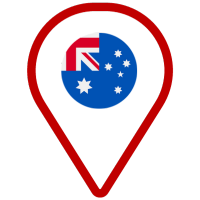
Quick facts about Australia
| States | 6 |
| Territories | 10 |
| Capital | Canberra |
| Population | 25.8M |
| Most populated city | Sydney, New South Wales (5.2M) |
| Official languages | English |
| Area | 2.9M mi² (7.6M km²) - 6th largest in the world |
| Currency | Australian Dollar (AUD) ($) |
| Form of government | Federal parliamentary constitutional monarchy |
| GDP (total) | $1.7 trillion - 20th in the world |
| GDP (per capita) | $64,674 - 21st in the world |
| Human Development Index (HDI) | 0.951 - 5th in the world |
(Sources: hdr.undp.org, IMF.org, worldbank.org, abs.gov.au, ga.gov.au, timeanddate.com)
Whether you're looking for the quiet remoteness of the Outback or the hustle and bustle of an East Coast city, the Land Down Under delivers!
Time zones in Australia
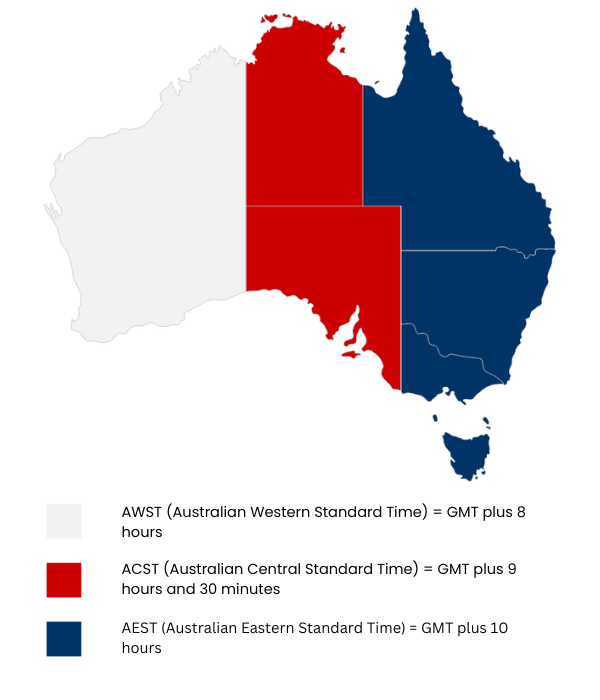
Summer Time (Daylight Saving Time) is used in New South Wales, the Australian Capital Territory, Victoria, South Australia and Tasmania from the first Sunday in October to the first Sunday in April.
However, the Northern Territory, Queensland and Western Australia don't use DST.
Why is Sydney not the capital of Australia?
Sydney is not the capital of Australia because after the founding fathers debated in 1901 whether to select Sydney or Melbourne, Canberra was chosen. Canberra is part of the Australian Capital Territory state, allowing fierce rivals New South Wales (Sydney) and Victoria (Melbourne) to reach a compromise.
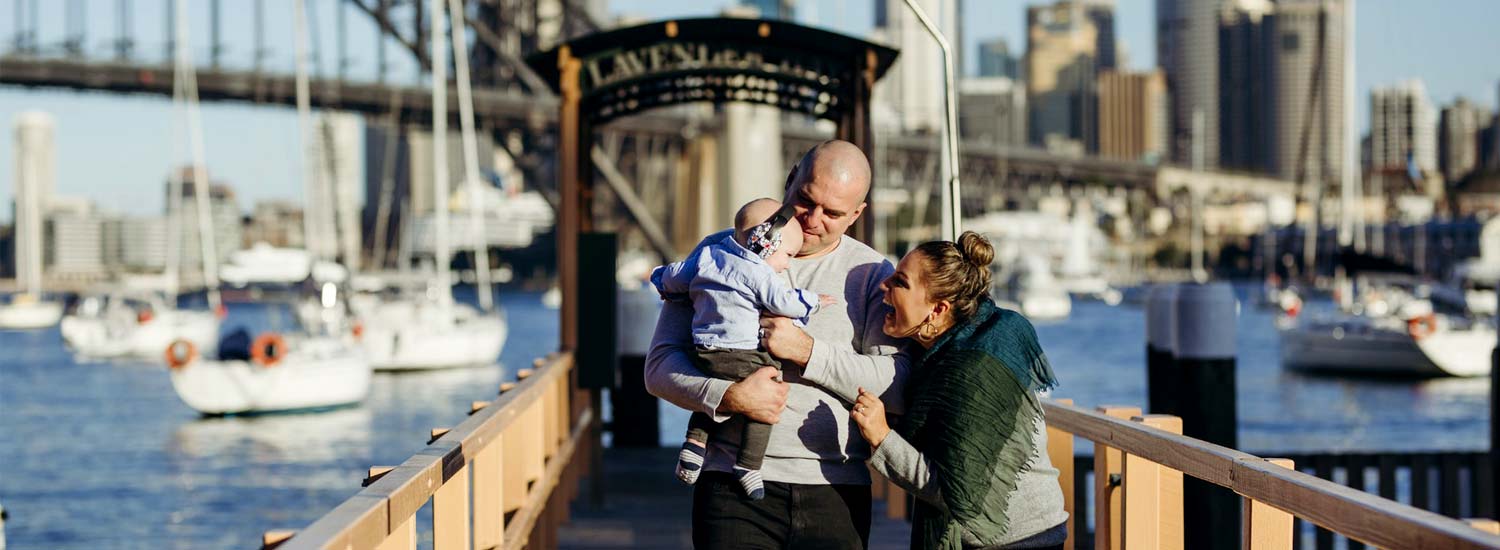
Pros and cons of moving to Australia
Oz has been accepting nationals from all over the world looking for a better life for centuries, and has long been known as one of the best countries to live and work. However, like most significant decisions, there are positives and negatives to consider before you commit to moving to Australia.

You might get a pay rise!:
Wages are generally higher, especially for skilled in-demand roles like civil engineers and computer programmers. In 2023, the average Australian monthly salary was 7,570 AUD.
Also, the unemployment rate is very low at 3.7%.
The locals will be pleased to meet you:
With a history of immigration stretching back hundreds of years, Aussies are famous for their friendliness, laid-back demeanour and sense of humour.
Living standards are high:
Thanks to a booming economy, bigger salaries, world-class universities and schools, and quality nationalised health services, Australia has one of the highest living standards in the world. The country placed an impressive 5th in the Human Development Index chart 2023.
Adventure on your doorstep:
From Outback camping and surfing on the Sunshine Coast to stunning natural vistas and the Rocky Mountains, Australia is a massive country bursting with once-in-a-lifetime experiences.
Plus, fascinating countries like New Zealand, Bali, Indonesia and Papua New Guinea are a relatively short plane journey away.

The summer months are sweltering!:
Australia's summer season occurs between December and February (opposite to northern hemisphere countries), with temperatures averaging at 29°C. That's why Australians typically opt for a beach BBQ instead of a roast dinner on Christmas day!
However, there are downsides to endless sunshine. Around two in three people living in Australia will get some form of skin cancer before the age of 70, so regular screenings are vital. Also, always wear sunscreen, and, if spending long periods outdoors, drink plenty of fluids, wear hats and sit in the shade whenever possible.
Australia is very, very far away:
Due to long and costly flights, Australia's isolation from many parts of the world might be an issue if you want to travel back home regularly. Trying to wrap your head around the size of this vast island nation is tricky. However, thanks to 613 domestic and international airports, accessing the country's more remote regions is relatively simple.
Expensive housing market:
The housing market in Australia is notoriously pricey, especially in major urban areas like Melbourne and Sydney. Cheaper places to live (with equal amounts of culture and opportunities!) include Perth, Adelaide and Newcastle.
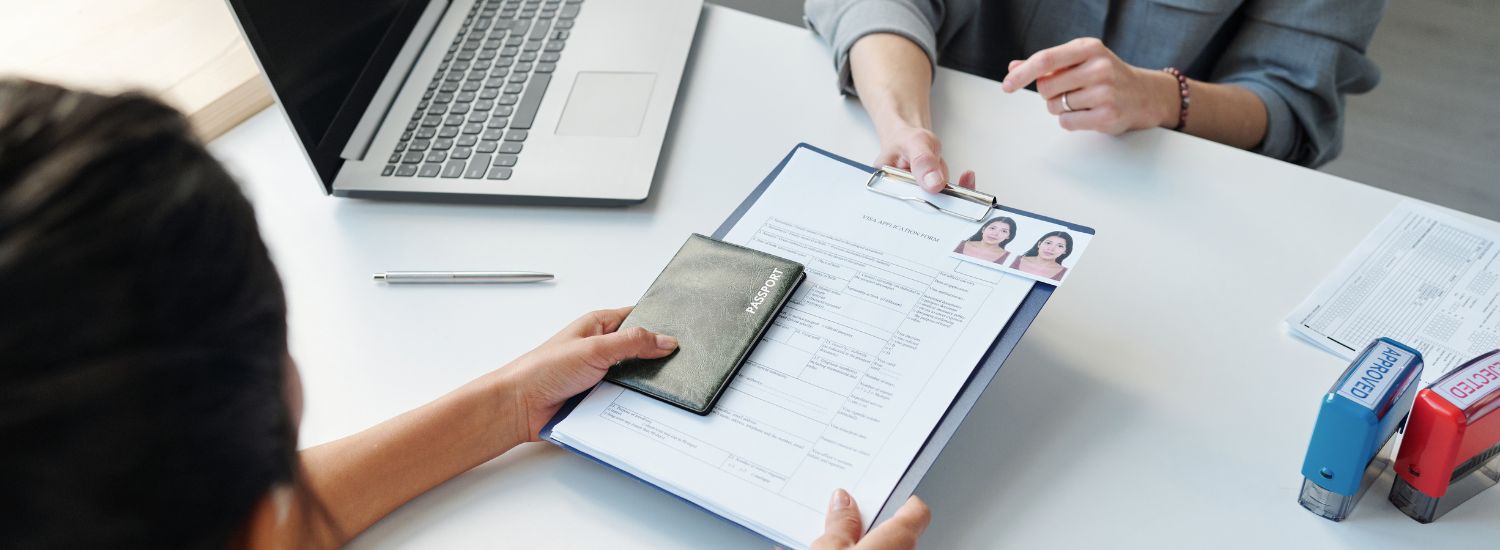
How to get an Australian visa: everything you need to know about entry requirements
To live and work in Australia, you must first apply for permission, detailing how long you wish to stay and your reason for moving. The Australian visa process is complex; it can sometimes take months or years to gain entry. The simplest way to get a visa is by having a desirable professional skill or getting sponsorship from a family member, spouse or an Australian employer.
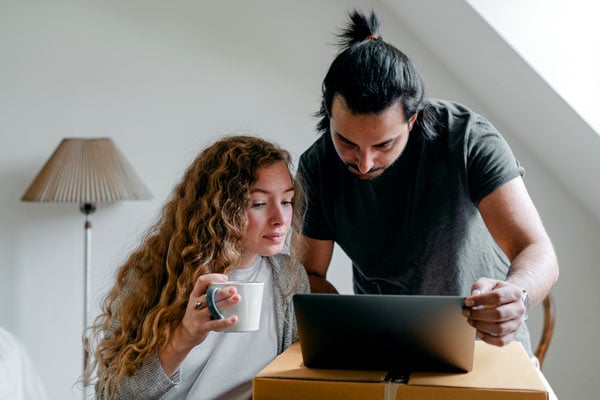
Skilled workers and family-sponsored Australian visas
There are more than 120 Australian visas, so learning as much as possible is essential before applying. Acceptance depends on numerous factors, including the county you're arriving from, your work experience, age, family size, and English language skills.
Your best chance of securing residence is via the Skilled Migration Program. Due to a skills shortage in the Australian job market, a large number of visas are set aside each year for immigrants with relevant work experience. Skilled worker visas have increased yearly since the COVID-19 pandemic, so there's never been a better time to apply!
If you can find an Australian employer to apply on your behalf, you may have a better chance of acceptance. Current in-demand roles include nurses, software engineers, carers, construction managers, mechanics, teachers and chefs.
Another way to win a permanent move is to have family members living in Australia. Thirty-seven different visas allow you to join family for short or long periods. Family visas range from Partner and Prospective Marriage visas to Age-Dependent Relative and Carer visas, so you'll surely find one to suit your situation.
How to apply for an Australian visa
To apply for an Australian visa, first go to the Australian Home Affairs website and select your visa type, e.g. "Work", "Study", "Live here permanently", etc. A short questionnaire will then direct you to an appropriate visa based on factors like your intended length of stay and who is making your application.
Once you've selected your visa, you'll see more in-depth details such as application costs, processing times, required proof of address and identification. Plus, eligibility requirements, including English language skills and your health status. Next, select "apply". The website will then direct you to an ImmiAccount registration page to begin your application journey.
If you're applying for a skilled visa, check if your job experience is on the skilled occupation list, then take a Skills Assessment. Skilled visas are assessed on a points system: the more in-demand your role is, the more points you'll gain. Next, submit an Expression of Interest (EOI). If you have enough points, you'll be invited to make an application.
What do I need to move to Australia?
To move to Australia, you need to secure a visa, arrange accommodation, ensure financial stability, and familiarise yourself with immigration requirements. Research visa options and prepare necessary documents. It's advisable to consult official Australian immigration resources for specific guidance.
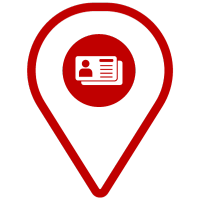
Other types of Australian visas
While a skilled worker visa or family member sponsorship is your most probable way to gain entry to Australia, there are other options:
- Student visas: depending on the length of your study, you can stay in Australia for up to five years on a student visa. You'll be able to move freely in and out of the country and work for up to 48 hours per fortnight during study times. You must meet English language requirements, have adequate health insurance and provide a character reference. Apply online via the Australian government website, in or outside the country.
- Work visas: there are 43 work-related Australian visas, including short and long-term stays for air or sea crew, foreign government employees or those teaching a foreign language. To increase your chance of acceptance, gain work experience in a field on Australia's skills shortage list.
- Visitor visas: for tourism or unpaid business trips, like conferences or events, apply for one of Australia's seventeen visitor visas. Stays range from just 72 hours up to 10 years via multiple short visits.
- Permanent retirement visas: if you are a long-term Australian resident and have an eligible child who is an Australian citizen or resident, there are two options: a Parent visa and a Contributory Parent visa. Requirements include age, health, character and current visa status.
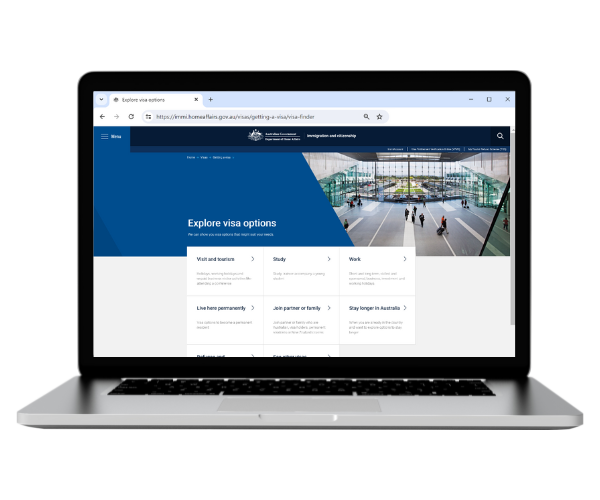
How long do Australian visas take to process?
Australian visas take between 1 day and 7 months to process, depending on your visa type and staffing levels at the embassy. The list below shows how long you can expect to hear back once you have submitted your application. Note that times are subject to change and depend on incoming workload and staffing levels.
Please check the Australian Government - Department of Home Affairs website for the complete list and further details.
- Permanent skilled worker: 5 months
- Temporary skilled worker: 11 days
- Partner (first stage): 7 months
- Student: 24 days
- Visitor: 1 day
- Working holiday: 1 day
Talk to a registered Australian migration agent
Since gaining entry to Australia can be complex, hiring a registered migration agent is worth considering. Agents can advise and guide you through each stage of your visa application, including your eligibility, likelihood of acceptance, and probable wait times.
Migration agents can be particularly beneficial when appealing a rejected application or suggesting alternative entry options. Hiring costs vary depending on individual circumstances and which visa type you wish to apply for, so do research thoroughly. Please ensure the migration agents you contact are registered with the Australian Office of Migration Registration Authority (MARA), as incorrect advice may damage your application.
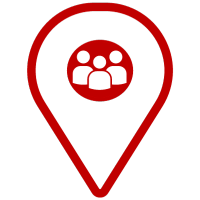
About Australia's migrant population
You won't be alone as an immigrant in the Land Down Under, with nationalities from most countries worldwide represented.
The Australian expat population has been steadily on the rise for decades. In 1948, expats comprised 10.4% of the population, rising to 29.5% by 2022.
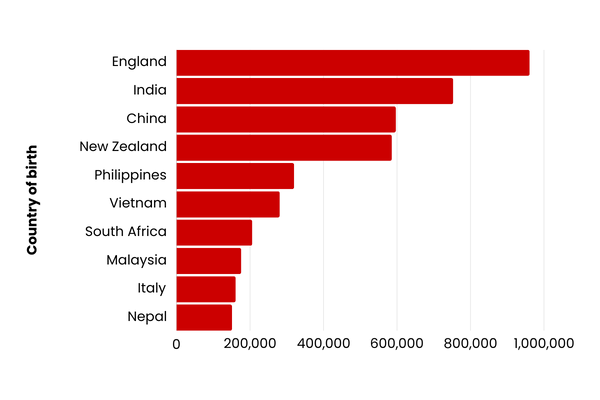
Almost a third of Aussies were born in another country!
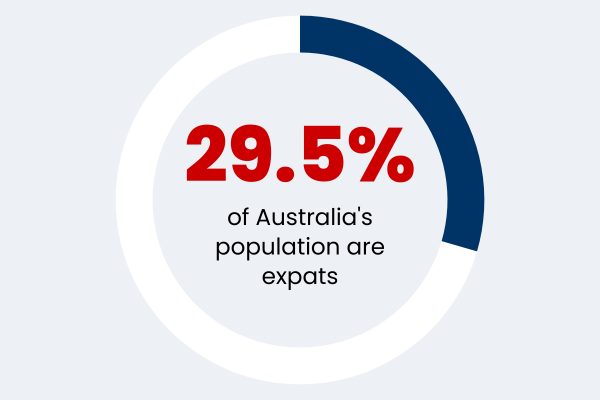
Source: Australian Bureau of Statistics

How long are Australian visas valid?
Australian visas are valid from between 3 months to 5 years, depending on the visa type. Here's how long some of Australia's most popular visas are valid for:
- Visitor visas (e.g. tourist visas, business visas, etc.): typically granted for stays of three, six, or twelve months but can vary based on individual circumstances and the purpose of the visit.
- Graduate visas: these are tied to the course length the student is studying, lasting from a few months up to five years.
- Working holiday visas: valid for 12 months from your Australia entry date. However, you can apply for an extension of up to three years if you complete a certain amount of work in a specified industry.
- Skilled worker visas: validity varies based on your situation and visa's subclass. Some skilled visas may grant permanent residency following a provisional period of eligibility.
- Family and partner visas: length of stay may be defined or permanent based on the specific visa subclass and the nature of your relationship.
You must check the details of the specific visa subclass you're interested in before applying.
Visit the Department of Home Affairs' official website for the most up-to-date and accurate information.
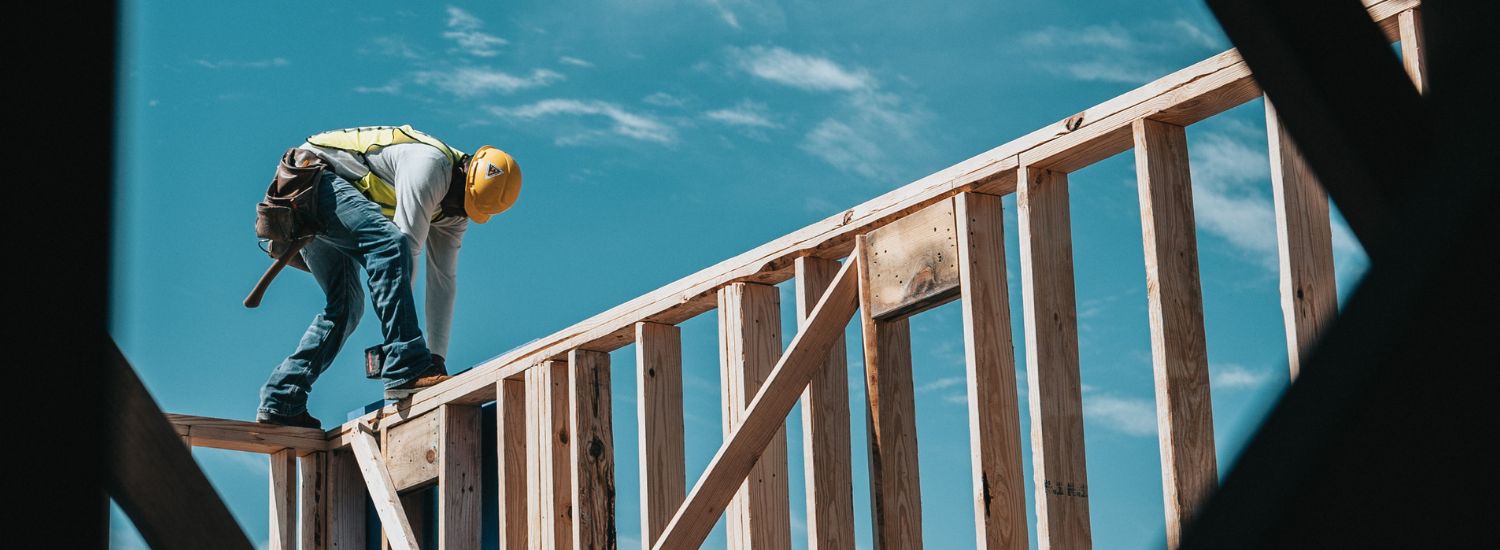
How much do Australian visas cost as of 2024?
While some Australian visas are free, others can cost up to $8,850. Below are some of the most common Australian visas and their base application cost. However, check the Australian Home Affairs website before applying, as prices can change, and your particular circumstances might mean you're exempt from visa application charges.
![]()
Short-stay visas
- eVisitor (subclass 651): AU$0
- Medical Treatment visa (subclass 602): AU$360
- Temporary Activity visa (subclass 408): AU$405
- Visitor visa (subclass 600) - Business Visitor stream: AU$190
- Working Holiday visa (subclass 417): AU$635
![]()
Family visas
- Aged Dependent Relative visa (subclass 114): AU$4,990
- Child visa (subclass 101): AU$3,055
- New Zealand Citizen Family Relationship (Temporary) visa (subclass 461): AU$420
- Parent visa (subclass 103): AU$4,990
- Partner visa (subclass 820/801): AU$8,850
![]()
Business visas
- Business Innovation and Investment (Permanent) visa (subclass 888): AU$3,310
- Business Innovation and Investment (Provisional) visa (subclass 188): AU$9,450
- Business Owner visa (subclass 890): AU$2,810
- Business Talent (subclass 132): AU$7,855
- Investor visa (subclass 891): AU$2,810
![]()
Skilled worker visas
- Global Talent visa (subclass 858): AU$4,710
- Permanent Residence (Skilled Regional) visa (subclass 191) - Hong Kong stream: AU$4,640
- Permanent Residence (Skilled Regional) visa (subclass 191) Regional Provisional stream: AU$475
- Skilled Independent visa (subclass 189): AU$4,640
- Temporary Work (Short Stay Specialist) visa (subclass 400): AU$405
![]()
Employer visas
- Employer Nomination Scheme visa (subclass 186): AU$4,640
- Regional Sponsored Migration Scheme visa (subclass 187): AU$4,640
- Skilled Employer Sponsored Regional (Provisional) visa (subclass 494): AU$4,640
- Skilled Independent visa (subclass 189): AU$4,640
- Skilled Nominated visa (subclass 190): AU$4,640
![]()
Student visas
- Student visa (subclass 500) - All other students: AU$710
- Student visa (subclass 500) - Foreign Affairs or Defence sector: AU$0
- Student visa (subclass 500) - Postgraduate research sector: AU$710
- Temporary Graduate visa (subclass 485) - Graduate Work stream: AU$1,895
Buying a house is a huge commitment, especially when you've only recently moved to the country. Instead, test the waters by renting a property first.
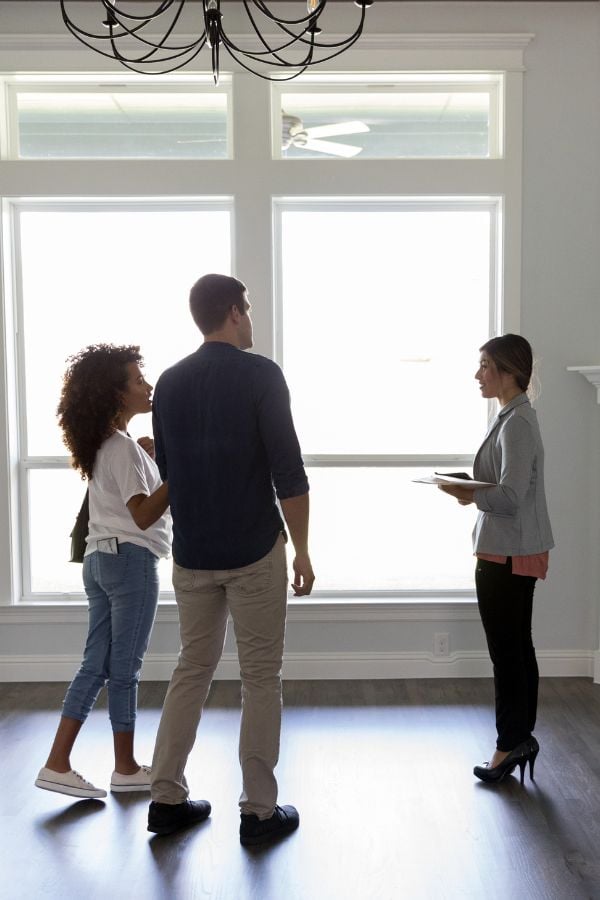
How much money do you need to move to Australia?
The amount you need to move to Australia varies. Consider expenses like visa fees, healthcare, accommodation, daily living costs and international removal costs. Research thoroughly and budget for a comfortable transition.
Below, we provide further information about these potential expenses:
Visa application costs:
Depending on the type of visa you opt for, there may be associated application fees. While some, such as the Regional Sponsored Migration Scheme visa, are free, others, like the Business Innovation and Investment (Provisional) visa, can cost up to $10,000.
There are twenty-two subclasses of working and skilled Australian visas, each with its own fees, including base charges, additional applicant charges, a temporary application charge and a non-internet application charge if you don't apply online.
Flights:
The cost of flights to Australia depends on your departure location, the time of year, flight class and the airline. International flights can range from a few hundred to several thousand dollars. Use flight comparison websites like Skyscanner and Flights Finder for the best deals.
Temporary accommodation:
Buying a house is a huge commitment, especially when you've only recently moved to the country. Instead, test the waters by renting a property first. After all, you might decide to try living somewhere else in Australia or that you miss home and want to return.
Look for the perfect pitstop on Real Estate, Rent or Property. Housing costs vary dramatically depending on the region and accommodation type, with Melbourne ranking the cheapest due to an average rental cost of AU$507 per week and Canberra the most expensive, costing roughly AU$690 per week.
Settling in costs:
Monthly living expenses include groceries, utilities, transportation, and other day-to-day costs, which vary between cities and regions. Keep aside enough cash for job training costs, unexpected household items, car rental and general administration fees.
What is the minimum wage in Australia?
The minimum wage in Australia is
AU$23.23 per hour
Source: Wage Indicator
Is it expensive to live in Australia?
It is expensive to live in Australia, although the average cost of living will vary significantly depending on the city or region you move to, your lifestyle, and your family size. Fortunately, competitive salaries offset this, including a minimum wage of AU$23.23 (£12.23) per hour for adults over 21 — the second highest in the world!
Before making any decisions, research the regions you're interested in, work out your earnings and outgoings and create a budget. The Australian government provides cost of living estimates on its official website.
Here are some more important financial points to consider before emigrating to Australia:
- Housing: rental prices and property costs vary across cities and regions. Sydney and Canberra are on the higher side, with Perth and Adelaide relatively more affordable. The average cost of owning a home in Australia is currently $912,700 while renting costs $2,600.
- Utilities and bills: conduct thorough research into how much your energy bills, such as electricity, gas and water, will cost using comparison websites like Compare the Market and the Australian government website, Energy Made Easy.
- Transportation: according to finder.com, the average Australian spends around $122 per week on commuting, which is around $5,388 per year for the average full-time employee. Public transport is generally cheaper than driving, so consider ditching your car — it also helps the environment!
- Food: based on the world's largest living database, Numbeo, an average three-course meal for two at a mid-range restaurant in Australia is $120. Alternatively, a litre of milk and a loaf of white bread will set you back $6.64 in Sydney, $6.23 in Melbourne, $6.93 in Perth, and $6.86 in Adelaide.
- Healthcare: Australia's public healthcare system, Medicare, covers most medical services for free or at a low cost. Many residents supplement Medicare with private health insurance, which can vary in price at an average of $166 per month for a single person.
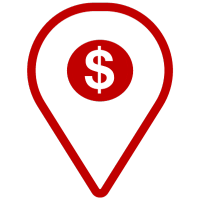
Cost of living in Australia*
Below are some average prices (AU$) for entertainment and everyday items in Australia:
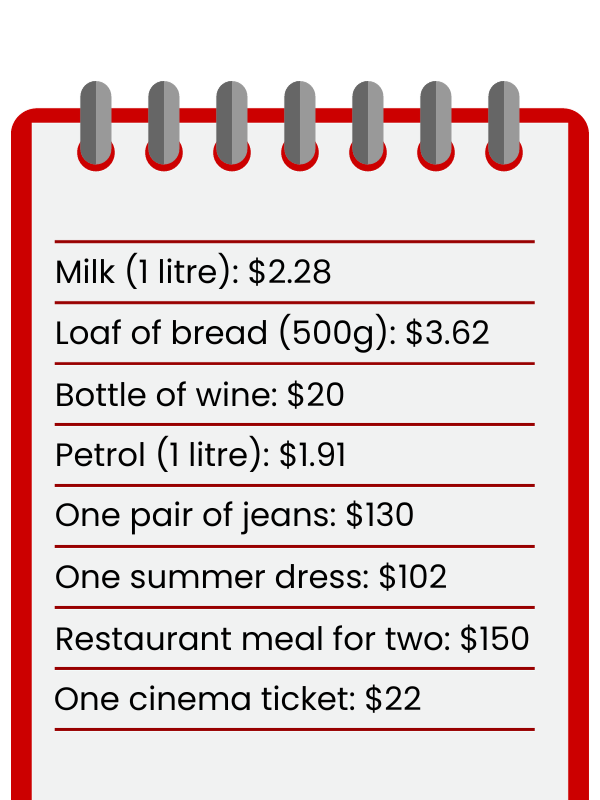
How much money do you need in the bank to move to Australia?
There's currently no minimum or maximum amount of money needed to apply. However, on arrival, Australian customs may ask for proof of AU$5,000 in the form of a bank statement to show you can support yourself during your first weeks and months in the country.
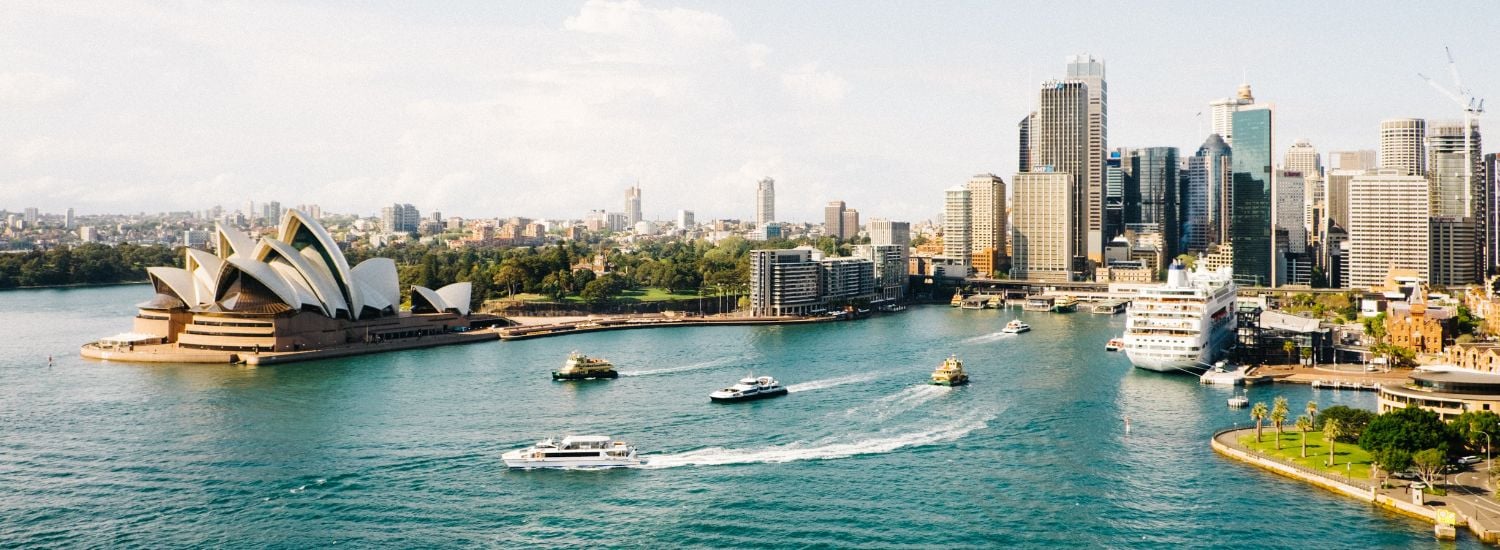
Best places to live in Australia: 9 incredible cities to call home!
Australia is a vast, varied land with stunning landscapes and buzzing cosmopolitan cities. In fact, it is the sixth-largest country in the world! Once your visa has been approved, you can live anywhere from the beach paradise of the Gold Coast to the rugged Outback in the west.
So, whether you care most about climate, education, crime or cost of living, we take a deep dive into the top cities for expats across Australia for young people, families and affordability.
Best places to live in Australia for young adults
The best places to live in Australia for young adults are Sydney (New South Wales), Melbourne (Victoria) and Brisbane (Queensland).
![]()
1. Sydney, New South Wales
The Harbour City is known for its iconic Sydney Opera House and thriving cultural scene. It's a truly cosmopolitan metropolis, with almost half its citizens being expats. Enjoy a diverse culinary scene and plentiful outdoor activities, from surfing at Bondi Beach to exploring the Blue Mountains.
The cost of living is considered high compared to other major Australian cities due to pricey housing. However, Sydney was ranked 5th safest city in the world by the World Population Review for 2024 and boasts many high-ranking educational institutes such as the University of Sydney and UNSW Sydney.
Population: 5.29M
Foreign-born population: 48.6%
Avg. annual household income: AU$108,004
Avg. monthly rent (for a studio): AU$3,356
Avg. house price: AU$1.3M
Cost of living: 12% higher than the Australian avg. for a family of four
Main industries: finance, IT, tourism and construction
Warmest month: January (avg. high 26°C, avg. low 19°C)
Coldest month: July (avg. high 17°C, avg. low 8°C)
Australia is a vast and varied land with stunning landscapes, deserts and thriving, cosmopolitan cities.
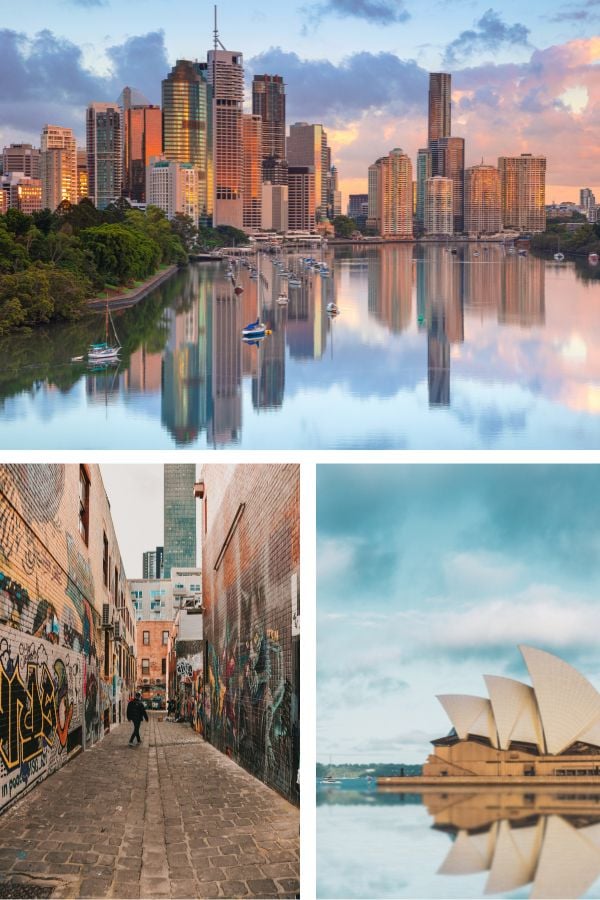
![]()
2. Melbourne, Victoria
Victoria's capital is well known for its diverse expat community and flourishing arts scene, thanks to numerous festivals and events. Enjoy the city's renowned coffee culture, explore eclectic neighbourhoods like Fitzroy and St Kilda and sample varied culinary delights.
Melbourne has a relatively high cost of living, although public transport and recreation options are comparable to or only slightly above the national average. This thriving metropolis was ranked the 10th safest city in the world by the World Population Review for 2024.
Population: 5.03M
Foreign-born population: 37.5%
Avg. annual household income: AU$98,852
Avg. monthly rent (for a studio): AU$2,403
Avg. house price: AU$820,000
Cost of living: 0.3% lower than the Australian avg. for a family of four
Main industries: healthcare, education and manufacturing
Warmest month: February (avg. high 27°C, avg. low 16°C)
Coldest month: July (avg. high 14°C, avg. low 7°C)
![]()
3. Brisbane, Queensland
The capital of Queensland offers expats a laid-back and subtropical lifestyle thanks to beautiful weather, varied outdoor activities and friendly locals. The city's riverfront, cultural precincts, and diverse neighbourhoods allow Brisbanites to enjoy urban amenities alongside natural beauty.
Brisbane also has a lower cost of living than Sydney and Melbourne, and two Times Higher Education world-ranked institutions, the University of Queensland and Queensland University of Technology. According to Victoria's Crime Statistics Agency, the safest Brisbane neighbourhoods to settle in are Golden Plains, Nillumbik and Manningham.
Population: 2.6M
Foreign-born population: 35.7%
Avg. annual household income: AU$96,148
Avg. monthly rent (for a studio): AU$2,630
Avg. house price: AU$770,500
Cost of living: 3% lower than the Australian avg. for a family of four
Main industries: mining, IT, tourism and construction
Warmest month: January (avg. high 29°C, avg. low 22°C)
Coldest month: July (avg. high 21°C, avg. low 10°C)
Best places to live in Australia for families
The best places to live in Australia for families are Canberra (Australian Capital Territory), Adelaide (South Australia) and Gold Coast (Queensland).
Canberra boasts excellent healthcare, education and efficient public services.
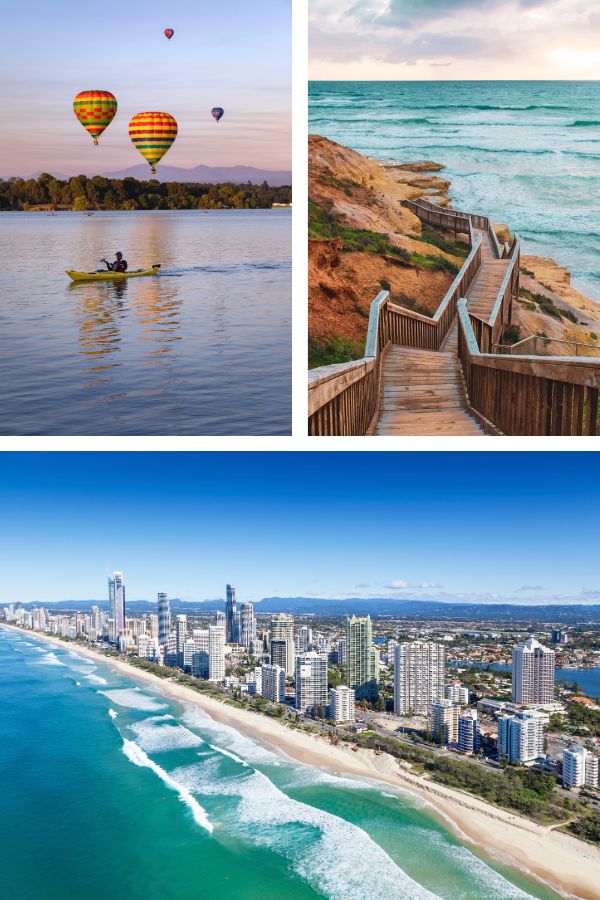
![]()
1. Canberra, Australian Capital Territory
The Bush Capital is known for its well-planned layout and proximity to nature. Canberra boasts excellent healthcare, education and efficient public services. The city's diverse community, strong job market and welcoming atmosphere make it popular among expats.
Although some living costs, like eating at a restaurant or gym memberships, are higher in Canberra, rent and groceries are cheaper on average than in Sydney. Of all Australian capitals, Canberra has the lowest crime rates. Popular suburbs include Uriarra Village, Jacka and MacArthur.
Population: 456,692
Foreign-born population: 28.8%
Avg. annual household income: AU$125,788
Avg. monthly rent (for a studio): AU$2,749
Avg. house price: AU$842,000
Cost of living: 13% lower than the Australian avg. for a family of four
Main industries: government, tech and cybersecurity
Warmest month: January (avg. high 29°C, avg. low 14°C)
Coldest month: July (avg. high 11°C, avg. low 0°C)
![]()
2. Adelaide, South Australia
The City of Churches is renowned for its cultural festivals, vibrant arts scene and green spaces. Adelaide provides a welcoming atmosphere for expats thanks to its diverse culinary scene, award-winning wineries and stunning beaches, including Kangaroo Island!
Compared to many major Australian cities, Adelaide is affordable. Plus, according to the crowd-sourced global database Numbeo, the city ranks "low" or "moderate" for all crime factors. Its top universities include the University of Adelaide, the University of South Australia and Flinders University.
Population: 1.4M
Foreign-born population: 45.4%
Avg. annual household income: AU$80,496
Avg. monthly rent (for a studio): AU$2,188
Avg. house price: AU$700,000
Cost of living: 1% lower than the Australian avg. for a family of four
Main industries: defence, healthcare and engineering
Warmest month: February (avg. high 29°C, avg. low 18°C)
Coldest month: June (avg. high 16°C, avg. low 8°C)
![]()
3. Gold Coast, Queensland
The City of Gold Coast attracts expats yearly looking for a sun-soaked and vibrant new life. Enjoy world-class beaches, an iconic skyline and a thriving entertainment scene. The Gold Coast offers a dynamic mix of urban sophistication and natural beauty.
Due to a yearly influx of visitors, the Gold Coast has a relatively high cost of living. However, it's considered a moderately safe city, although as a tourist hotspot, remain vigilant of pickpockets. Well-respected further education institutions include Griffith University, Bond University and Southern Cross University.
Population: 640,000
Foreign-born population: 29.1%
Avg. annual household income: AU$87,932
Avg. monthly rent (for a studio): AU$2,232
Avg. house price: AU$832,000
Cost of living: 10% lower than the Australian avg. for a family of four
Main industries: construction and entertainment
Warmest month: January (avg. high 29°C, avg. low 20°C)
Coldest month: July (avg. high 20°C, avg. low 9°C)
Cheapest places to live in Australia
The best places to live in Australia for families are Perth (Western Australia), Newcastle (New South Wales) and Wollongong (New South Wales).
![]()
1. Perth, Western Australia
Western Australia's capital city welcomes all with its relaxed lifestyle, endless sunshine and stunning coastal views. Perth offers a wealth of outdoor activities, a diverse cultural scene and yearly festivals.
Plus, Perth was recently voted the most affordable city in Australia! Like most major cities, some areas have higher crime rates than others, so research before moving. Safe suburbs include Dalkeith, Floreat and Lower Chittering. Several of the city's renowned universities include the University of Western Australia, Edith Cowan University and Curtin University.
Population: 2.1M
Foreign-born population: 54.1%
Avg. annual household income: AU$100,412
Avg. monthly rent (for a studio): AU$2,709
Avg. house price: AU$631,000
Cost of living: 17% lower than the Australian avg. for a family of four
Main industries: mining, engineering, IT and tourism
Warmest month: February (avg. high 31°C, avg. low 20°C)
Coldest month: July (avg. high 18°C, avg. low 10°C)
Perth was recently voted the most affordable city in Australia!
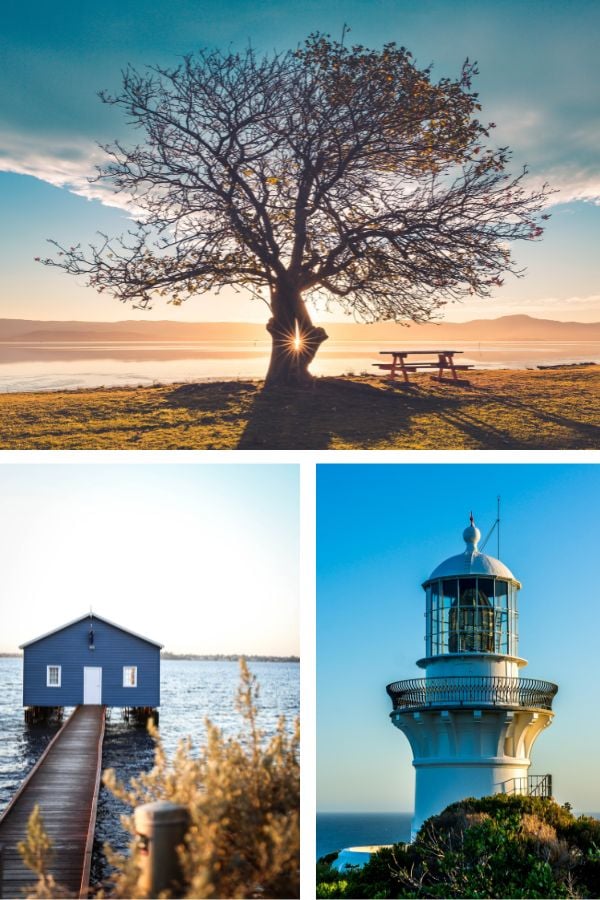
![]()
2. Newcastle, New South Wales
Steel City beckons expats seeking a mix of urban living and natural beauty. Enjoy pristine beaches, thriving arts and a relaxed, sunny lifestyle. Newcastle's friendly community and a strong sense of local identity contribute to the welcoming atmosphere.
With its working-class roots, Newcastle is considered a more affordable city than its East Coast neighbours, such as Sydney, Canberra and Brisbane. Crime is higher in some city centre areas, so research before you move. Suburbs like New Lambton, Kotara and Adamstown Heights are considered family-friendly.
Population: 348,000
Foreign-born population: 14.8%
Avg. annual household income: AU$87,152
Avg. monthly rent (for a studio): AU$2,297
Avg. house price: AU$815,000
Cost of living: 22% lower than the Australian avg. for a family of four
Main industries: steel, education and healthcare
Warmest month: February (avg. high 25°C, avg. low 20°C)
Coldest month: July (avg. high 17°C, avg. low 9°C)
![]()
3. Wollongong, New South Wales
The Gong combines urban sophistication with natural beauty. Surrounded by lush landscapes and complemented by a lively arts and culture scene, Wollongong is a harmonious blend of industrial and coastal charm.
With the lowest average rent and house prices on our list, Wollongong is affordable compared to Australia's big cities like Sydney, Melbourne and Canberra. Favoured suburbs for low crime rates include Cordeaux Heights, Figtree and Wollongong Central. Plus, the University of Wollongong is a world-ranked institution!
Population: 280,153
Foreign-born population: 16%
Avg. annual household income: AU$87,464
Avg. monthly rent (for a studio): AU$2,053
Avg. house price: AU$530,000
Cost of living: 24% lower than the Australian avg. for a family of four
Main industries: steel, education, maritime and tourism
Warmest month: January (avg. high 26°C, avg. low 18°C)
Coldest month: July (avg. high 17°C, avg. low 8°C)
Sources: expatistan.com, abs.gov.au, statista.com, corelogic.com, numbeo.com
What is the largest city in Australia?
The largest city in Australia is Sydney, with a population of 5.4 million. Melbourne is a close second, at 5.2 million. Thanks to iconic landmarks such as the Sydney Opera House and Sydney Harbour Bridge, Sydney is a major cultural and economic hub, attracting tens of millions of visitors yearly.
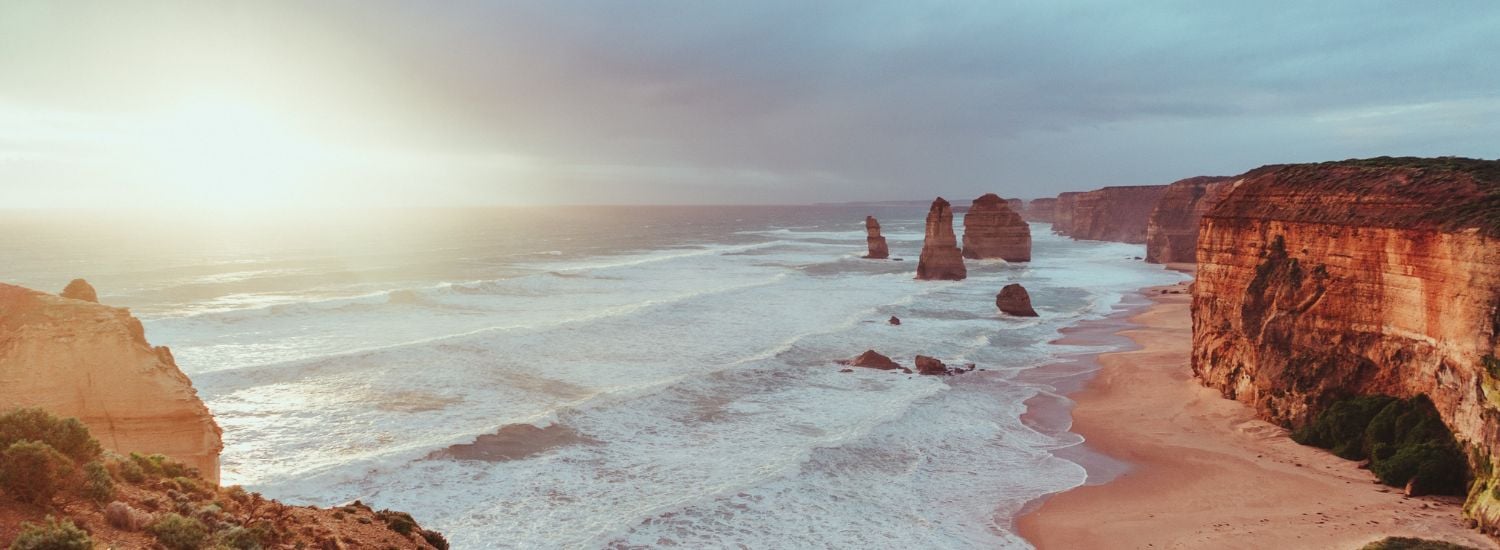
Moving to Western Australia
Australia's largest state is a patchwork of diverse landscapes. From the bustling city of Perth to the rugged beauty of the Kimberley region, it's no wonder so many wish to make Western Australia their home. Enjoy pristine beaches, vibrant marine life, nature reserves, ancient Aboriginal sites and much more!
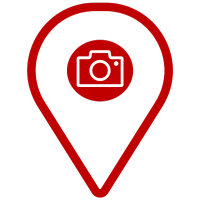
Top spots to visit in Western Australia
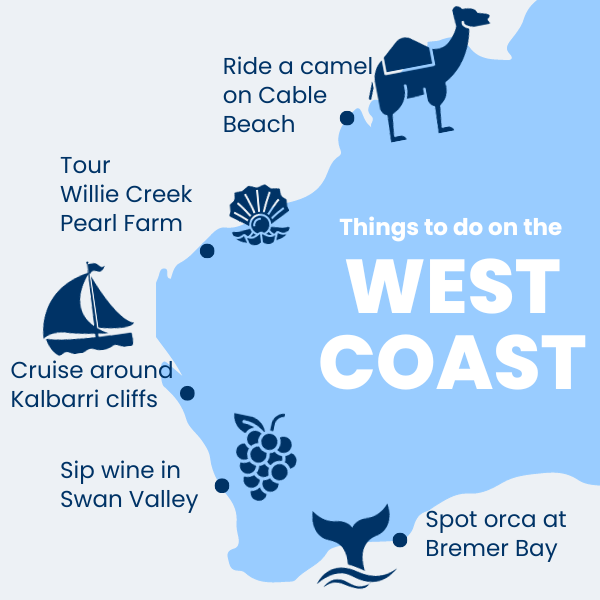
From the bustling city of Perth to the rugged beauty of the Kimberley region, it's no wonder so many wish to make Western Australia their home.
Best places to live in Perth
East Perth, Ashfield and North Fremantle are considered amongst the best places to live in Perth. With a population of nearly half a million, Perth attracts expats thanks to its thriving labour market, lower house prices, regular flights to places like Bali, and stunning yearly weather.
Fun fact — while Perth is the world's most isolated city due to its closest cosmopolitan companion, Adelaide, being 2,100km away, it's also the sunniest, basking in an average of eight hours of sun each day, year-round.
- East Perth: voted the best place to live in Perth by Soho.com, this area boasts a wealth of green spaces, stunning views of Elizabeth Quay and proximity to the central business district (CBD).
- Ashfield: a cosy suburb along a scenic section of the Swan River with excellent access to public transport and affordable homes.
- North Fremantle: the perfect spot for those who live for sunbathing and surfing. North Freo, as the locals call it, sits beside sandy beaches and azure seas and is only a short commute from the University of Notre Dame.
Australian property prices: most and least expensive states
New South Wales
$1,167,500 avg. house value
Northern Territory
$512,00 avg. house value
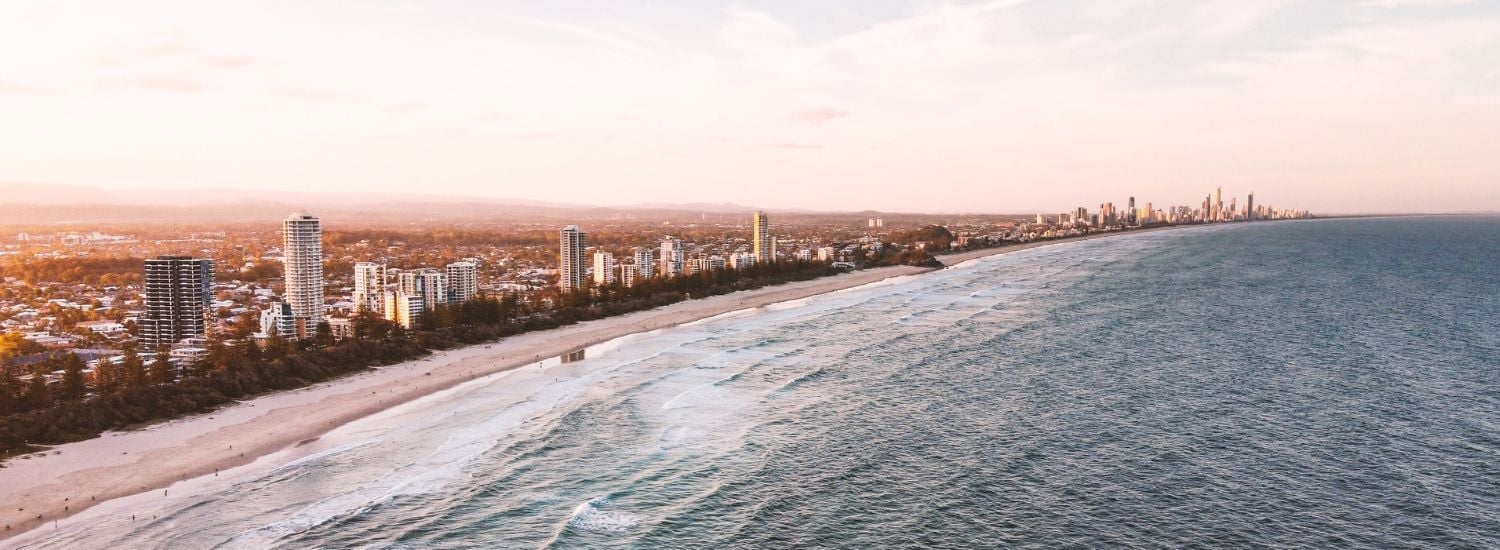
Moving to East Coast Australia
Sun, sea and sand — there's much to love about Australia's East Coast! The options are endless, from Sydney's iconic landmarks and Melbourne's lively cultural scene to the political hub of Canberra and the surfer's paradise of the Gold Coast.
Here we break down some much-loved city neighbourhoods across Australia's eastern states of New South Wales, Victoria, Queensland, and the Australian Capital Territory:
Best places to live in Sydney
Paddington, Surry Hills and Newtown are considered some of the best places to live in Sydney. However, Sydney is a diverse and exciting city with a wide range of neighbourhoods, each with its unique atmosphere. Enjoy world-class beaches, natural beauty and an urban allure that captivates residents and visitors alike.
- Paddington: known for its Victorian terrace houses and trendy vibe. Enjoy a mix of boutique shops, cafes and cultural hotspots, all close to the city centre.
- Surry Hills: a trendy neighbourhood close to Sydney's CBD, offering a vibrant nightlife and world-class dining.
- Newtown: popular with artists, students and young professionals due to its bohemian atmosphere, vintage shops and theatre spaces.
Best places to live in Brisbane
Some of the best places to live in Brisbane include New Farm, Paddington and the West End. Queensland's sunny capital boasts diverse neighbourhoods that blend historic charm with modernity. Enjoy lush parks, several cultural venues and outdoor activities in this subtropical, friendly metropolis.
- New Farm: an inner-city suburb along the Brisbane River with a lively atmosphere, farmers markets and many green spaces.
- Paddington: a charming suburb characterised by its colourful Queenslander homes. Enjoy a mix of quirky boutiques, antique shops and the impressive Suncorp Stadium.
- The West End: known for its multicultural population and bohemian atmosphere, boasting many local events, including art shows, theatre and music.

Must-see places on Australia's East Coast
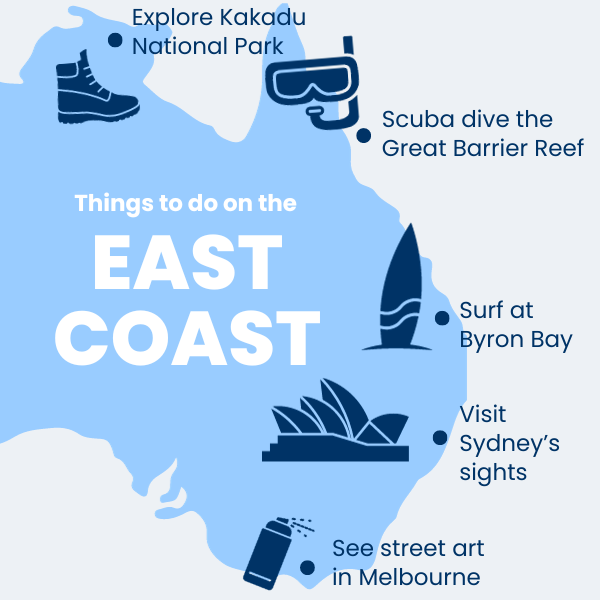
The options are endless, from Sydney's iconic landmarks and Melbourne's lively cultural scene to the political hub of Canberra and the surfer's paradise of the Gold Coast.
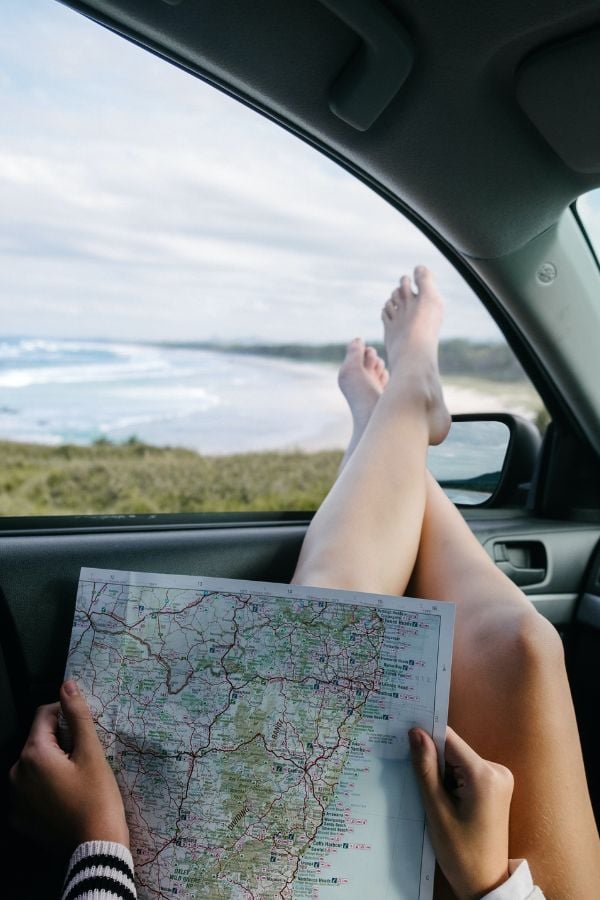
Best places to live in Melbourne
A few of the best places to live in Melbourne are East Melbourne, South Yarra and Fitzroy. Melbourne is known for its cultural diversity, vibrant arts and passionate sports fans. Explore neighbourhoods with distinct personalities featuring hidden cafes, street art and gorgeous gardens.
- East Melbourne: a leafy, prestigious area with stunning Victorian architecture and blooming parks. It's also conveniently close to the Melbourne Cricket Ground.
- South Yarra: a prosperous suburb known for its stylish boutiques, high-end dining and proximity to the Royal Botanic Gardens.
- Fitzroy: famous for its artistic, bohemian vibe, featuring hip inner-city stores, expressive graffiti and lively nightlife.
Best places to live in the Gold Coast
Broadbeach, Surfers Paradise and Burleigh Heads are considered amongst the best places to live in the Gold Coast. The Gold Coast attracts expats due to its stunning beaches, surfer lifestyle, and outdoor activities. Enjoy the coastal living and natural beauty that has helped define Australia's classic beach lifestyle.
- Broadbeach: a centrally-located, bustling suburb near the beach and the Star Casino. Enjoy an exciting mix of high-rise apartments and five-star dining.
- Surfers Paradise: famous for its iconic beach, towering skyline and shopping and entertainment options. It attracts residents and tourists with its magnetic, fun atmosphere.
- Burleigh Heads: celebrated for its laid-back lifestyle and excellent waves. Enjoy a desirable mix of beachfront living and a thriving café culture.
Best places to live in Canberra
Some of the best places to live in Canberra include Yarralumla, Manuka and Kingston. Canberra is known for its carefully planned layout, cultural institutions, and access to nature. Enjoy a harmonious balance of civic pride, top-notch education, and outdoor pursuits surrounded by bushland and lakes.
- Yarralumla: an affluent suburb known for its embassy precinct, heritage-listed homes, serene greenery and city centre access.
- Manuka: a vibrant precinct within Canberra's inner south featuring boutique shopping, fine dining and endless cultural options.
- Kingston: a thriving inner-south suburb on the shores of Lake Burley Griffin. Visitors and residents flock yearly thanks to waterside dining and a vibrant mix of entertainment options.
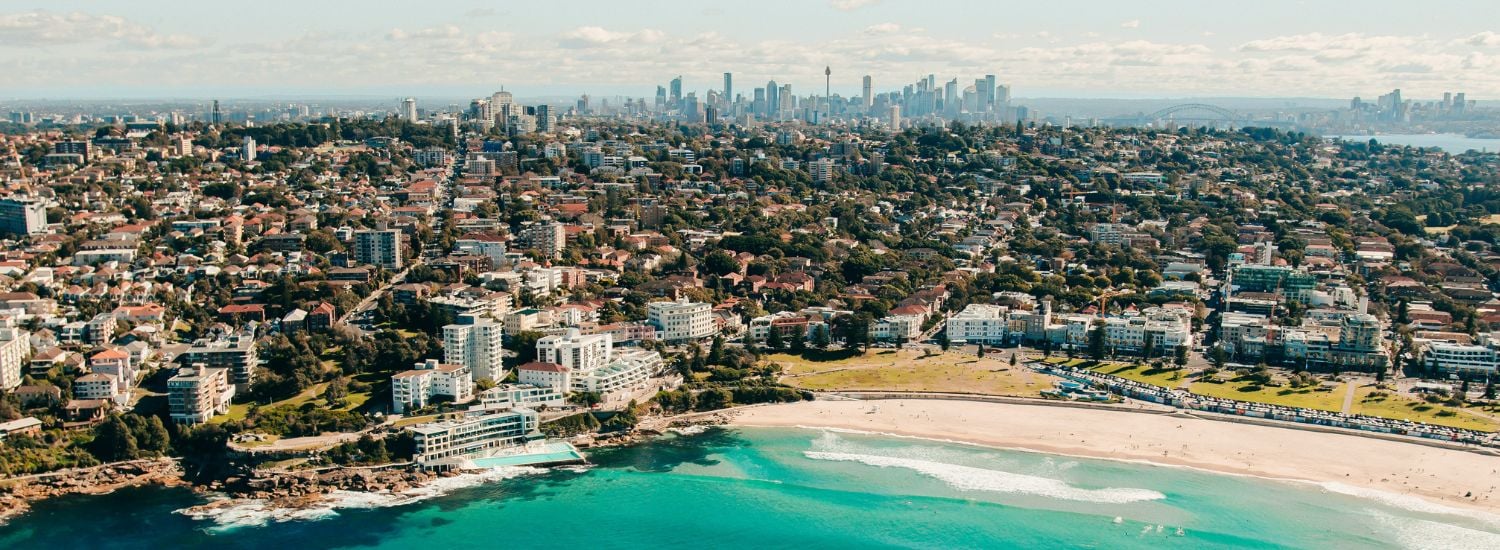
Renting vs. buying a property in Australia
Once you've chosen an area of Australia to settle, it's time to decide whether to buy or rent. Renting is an excellent way to acclimate to your new surroundings before committing to a large purchase. After all, if you discover Australia isn't suitable for you and your family, you may wish to return home. On the other hand, buying lets you build roots immediately with a piece of land that's all yours.
And remember to book temporary accommodation at a local hotel or Airbnb so you have a place to stay while house hunting!
![]()
What documents do you need for a rental application in Australia?
Typically, the documents you must provide to rent a property in Australia include:
- Personal identification: typically your passport; however, the estate agent might also ask for other forms of photo identification, such as student ID, your visa or a driver's license.
- Proof of income: you'll need to provide copies of several months of payslips, a bank statement or a job acceptance offer that includes your salary.
- Rental history: this might be a previous rental agreement, a reference from a former landlord or estate agency or copies of previous rental payments you've made.
- References: you must also provide professional references from your manager or department head. If you haven't worked before, a personal reference from a teacher or community leader should be acceptable.
Renting property in Australia
Before arriving in Australia, conduct online research into your chosen area. Consider house prices, your work commute, public transport, schools, crime rates, parks and local amenities. Popular letting websites such as Realestate, Rent and Property are excellent resources.
Avoid picking a home based only on images, video and text. Instead, arrange to see it in person. You'll get a better feel for the property and can ask the letting agent for further information.
Top tip: use Realestate.com.au's suburb searcher tool to explore each Australian state's most popular residential areas. It also offers price trends, the number and types of homes leased, and other handy property market insights.
Once you pick a property, complete the application form. Other people will likely apply, so fill it out quickly. You'll need to provide proof of income and ID (a passport, driver's licence, birth certificate, etc.), so ensure these are easily accessible. The estate agent will also ask for personal and rental references to verify your character and suitability. Add a cover letter about yourself and why you like the property. It adds a personal touch to your application, helping you stand out from the competition.
Before moving in, you must sign a rental contract (lease). Usually, leases last a year and include details on your responsibilities as a tenant, such as paying for utilities, paying a bond (deposit) and regulations if you have pets. It should also include your landlord's contact details and duties like repairs and health and safety considerations. Read your rental contract carefully and request a copy.
Buying a house in Australia
Start by working out your finances to ensure you can afford a mortgage — remember you'll need a deposit, typically 20% of your desired home's price. Then, check your credit score on sites like Experian, Equifax and Illion, which can assess your mortgage acceptance likelihood and offer tips to improve your score.
Next, apply for a pre-approved home loan from a few banks. Trusted institutions include the Commonwealth Bank of Australia, Westpac Banking Corporation and the National Australia Bank Limited. Pre-approval gives you an idea of what you can afford and the interest rates you might be offered. Consider using a mortgage broker to help liaise with the banks on your behalf for the best rates.
View as many houses as possible via popular property sites like Realestate.com.au and OntheMarket.com. Once you find the ideal home for your family, make a bid. If needed, a buyer's advocate can help with negotiations. If your offer is accepted, you and the seller will sign a Contract of Sale, which you should read carefully. If you have any doubts about its contents, consult a conveyancing solicitor.
Next, hire professionals to conduct a building inspection. Missing this step could be costly in years to come. Finally, make an official offer on the home, complete your loan agreement with your bank, and let your conveyancing solicitor handle the legal aspects.
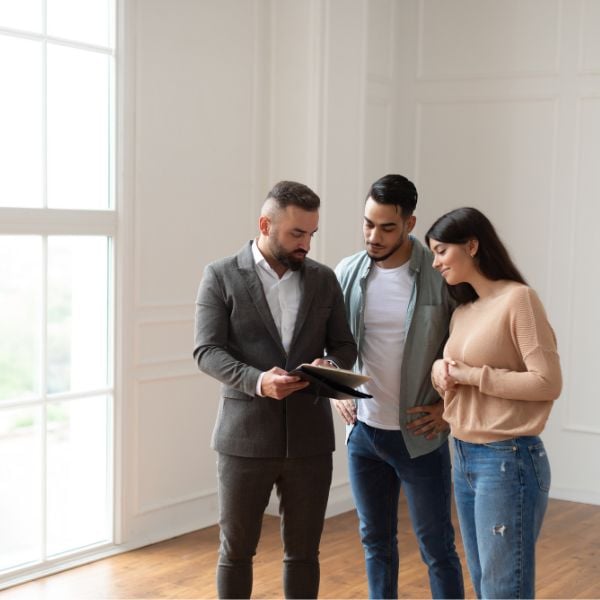
How to open an Australian bank account as an expat
To open an Australian bank account as an expat, visit a few brick-and-mortar banks in your new neighbourhood and do some online comparisons. The most popular Australian banks are known as "The Big Four" — Commonwealth Bank of Australia, Westpac Banking Corporation, Australia and New Zealand Banking Group Limited (ANZ) and National Australia Bank.
Here are some examples of common Australian bank accounts:
Transaction account: for receiving wages and paying for everyday necessities like bills, groceries, petrol, etc. Services you can access with this type of account include ATM withdrawals and account transfers.
Savings account: for storing spare money to use at a later date. These accounts have higher interest rates than transaction accounts so that you can earn more on top of your savings.
Term deposits: savings accounts that usually earn higher interest than regular savings accounts on the provision they are untouched for a fixed amount of time (1+ years).
To open an account, you must provide identification such as an Australian driver's licence, birth certificate or passport.

Ways to transfer money to an Australian bank account
There are a few options to seamlessly transfer your overseas money into your new Australian bank account:
- Bank wire transfer: this is where a bank directly transfers money to another bank. You can authorise such transfers by calling them or visiting in person. The process is very secure but may incur high fees.
- Online money transfer: platforms like PayPal, Wise and Revolut let you send money online via an app or on their website. Fees are usually lower than traditional banks.
- International money order or cashier's cheque: ideal if you prefer the peace of mind of sending your Australian bank physical paperwork. It will take more time to clear but is typically cheaper.

Working and getting a job in Australia
With almost four hundred thousand job vacancies across Australia, expats have ample opportunities to land a job. Your best chance is to obtain sponsorship from an Australian employer for an in-demand role as part of the country's Skilled Migration Program. Work experience is often valued over university or college qualifications, so don't worry if you don't have a degree.
Plus, if your profession isn't currently in demand, Australia offers a whopping 43 working visas covering everything from business owner and investor visas to working holiday and religious worker visas. There's bound to be one that suits your situation!
Stand out from the competition by researching standard Australian resume layouts, then write a well-crafted cover letter highlighting your skills, suitability for the role, and desire to go the extra mile.
Tips for job hunting in Australia
Before you begin your search, you must understand your visa's working conditions. For example, can you work full-time or only part-time? Can you work for the same employer continuously or only for a set period? And is there a limit on how many hours per week you can work? Check your working visa's specific terms and conditions on the Department of Home Affairs website.
Next, research Australia's biggest employers and industries to determine where your skills fit best. The government website Job Outlook Australia is an excellent resource for job statistics, including any required training, average pay, demographics and how in-demand the role is.
Then, make several CV versions to highlight different aspects of your employability. For example, one resume might emphasise technical abilities and experience when applying for a job in IT. In contrast, you might highlight your customer-facing skills for a role in sales.
Utilise popular job listing websites like Seek, Indeed and CareerOne, and connect with potential employers on LinkedIn, a social media platform designed for professionals.
Further, job-seeking searching options include:
- Attending networking social events and career fairs to build connections.
- Displaying your skills for free by offering to volunteer or take up an internship.
- Registering with recruitment agencies who can liaise with employers on your behalf.
- Checking your desired employer's website for vacancies. If you don't see any, email them your resume anyway!
Stand out from the competition by researching standard Australian resume layouts, then write a well-crafted cover letter highlighting your skills, suitability for the role, and desire to go the extra mile. Remember to learn as much as you can about the company first.
Finding a job in a competitive market requires persistence and resilience — keep applying and making connections, and you'll land your dream Aussie job in no time!
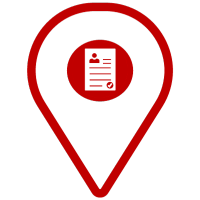
Australian employment statistics
| Avg. weekly working hours | 31.7 |
| Avg. annual income | $68,092 |
| Full-time employed | 9.82M |
| Part-time employed | 4.34M |
| Vacancies | 390,400 |
Sources: abs.gov.au, treasury.gov.au
Top 10 in-demand jobs in Australia
The top 10 current in-demand roles in Australia are nurses, teachers, software developers, electricians, construction managers, carpenters, machinists, plumbers, mechanics and university lecturers according to Australian Labour Market Insights. Please see the graph below for more details and their respective occupation ceilings*.
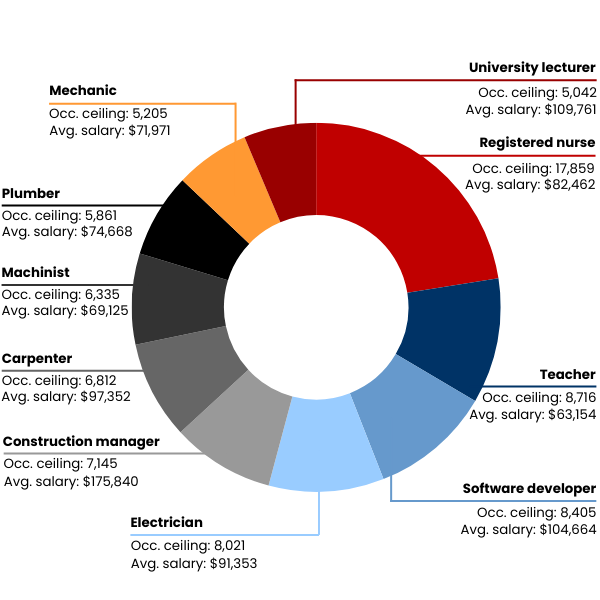
*Occ. ceiling (occupation ceiling): the maximum number of invitations issued for an occupation group within the program year.
How much annual leave do you get in Australia?
Australian employees, full and part-time, are guaranteed four weeks of annual leave every year. It's common for workplaces to shut down for a full two weeks over the holiday period leading up to New Year, which is often given in addition to your annual leave. Plus, most employers offer unpaid time off if requested.

Understanding the Australian education system
In Australia, children must receive an education between six and sixteen years old in school or at home. Find your local schools using the Australian Schools Directory search tool.
You can enrol your child at any time of the year, but plan well in advance as some institutes have long waiting lists. During enrolment, you might need to provide your child's immunisation history.
Education in Australia is comprised of a mix of public and private schools and is divided as follows:
- Preschool and kindergarten: although optional, most children attend some form of preschool between the ages of four and five. Children are prepared for primary school, developing essential learning and social skills.
- Primary school (grades 1-7): compulsory schooling starting at six and lasting six years. The curriculum covers various subjects, including English, mathematics, science, social studies and physical education.
- Secondary school (grades 8-12): compulsory schooling lasting for four years. Students study a range of more specialised subjects based on choice and ability.
In the final two years, known as Senior Secondary, students have increased flexibility to choose specific subjects based on future study plans and career goals.
An overview of higher education in Australia
With almost 70% of the Australian workforce having a post-school qualification, competition for the best jobs has never been greater. Admission to tertiary (further) education varies but may include academic performance in your home country, English language skills, Australian Tertiary Admission Rank (ATAR), and relevant work experience.
Here are some examples of tertiary education institutions and qualifications available to Australian students:
- Technical and Further Education (TAFE): options include undergraduate, graduate and doctoral courses across various disciplines.
Qualifications include certificates, diplomas and advanced diplomas, either completed independently or with a combination of workplace training. There are also postgraduate certificates and bachelor's degrees available at some institutions. The average salary for graduates with TAFE qualifications is $73,000.
- Universities: a wide range of undergraduate and postgraduate courses focusing on research, academic theory and exams. Students gain a deeper and broader education than in trade schools, which typically focus narrowly on one desired occupation.
Qualifications include bachelor's degrees (3-4 years), master's degrees (1-2 years) and doctoral degrees (3+ years). The average salary for graduates with a bachelor's degree is $75,000, $103,958 for a master's and $100,787 for a doctoral degree.
With almost 70% of the Australian workforce having a post-school qualification, competition for the best jobs has never been greater.

Top 4 Australian universities
The top 4 Australian universities are the University of Melbourne, Monash University, the University of Sydney and the Australian National University, according to Times Higher Education. Here's some more information about each of these institutions:

University of Melbourne, Melbourne, Victoria
World ranking: 34 | Founded: 1853 | Full time students: 51,307 | International students: 47%
The University of Melbourne is globally recognised for its academic excellence, diverse disciplines and commitment to research.
Located in the Melbourne suburb of Parkville, the university offers students a lively campus culture and state-of-the-art facilities. With an emphasis on critical thinking and creativity, students can foster intellectual growth and promote innovation.
It also boasts over 200 student communities and clubs, including sports teams, religious groups and political meetups.

Monash University, Melbourne, Victoria
World ranking: 44 | Founded: 1958 | Full time students: 58,460 | International students: 38%
Monash University is a dynamic and innovative institution known for its world-class research and global outlook. As one of Australia's largest universities, Monash teaches students from over 170 countries and boasts two overseas campuses, one in Malaysia and one in Indonesia.
The university is proud of its commitment to social diversity and advancements in science, technology and the humanities. Students can choose from over 6,000 courses, including business and economics, engineering, information technology, law and pharmaceutical sciences.

University of Sydney, Sydney, New South Wales
World ranking: 54 | Founded: 1850 | Full time students: 57,414 | International students: 51%
Located in the Royal Botanic Gardens near the Opera House, the University of Sydney is Australia's oldest and perhaps most prestigious institution. It's renowned globally for its academic excellence and research contributions.
The forward-thinking institution was one of the first universities in the world to admit students based only on academic merit and to open its doors to women on the same basis as men.
Five Nobel laureates, two Crafoord laureates and eight Australian prime ministers have affiliations with the university.

Australian National University, Canberra, ACT
World ranking: 62 | Founded: 1946 | Full time students: 17,293 | International students: 48%
The Australian National University (ANU) is a top-tier public research institution renowned for its global impact and commitment to innovation. ANU consistently ranks among the world's best and boasts various academic programs in multiple disciplines, including the arts, law, computer sciences and medicine.
Thanks to a strong emphasis on cutting-edge research, ANU attracts a dynamic international community of students and staff. The university counts six Nobel laureates and forty-nine Rhodes scholars throughout its history.

What you need to know about the Australian healthcare system
Thanks to a robust healthcare system, Australia boasts one of the longest life expectancies in the world for both men and women, at 81 and 85 years old respectively. Access to medical services is a mix of public and private choices, with most opting for publicly-funded Medicare for free and low-cost care. Private providers vary in price and coverage but typically include longer one-on-one time with medical professionals and shorter wait times for treatment.

How to pick an Australian healthcare insurance plan
Decided to opt for private healthcare? Here are some key questions to ask to help you choose the most suitable insurance plan for you and your family:
- Which medical services are covered, and are extras like ongoing prescriptions and preventative screenings included?
- Does the plan cover my entire family?
- Are payments made monthly or yearly, and how much does it cost?
- Does the plan include mental health services and maternity care?
- Are emergency services and hospital stays included?
- Is it easy to switch doctors or specialists within the network?
- Are there waiting periods for specific treatments?
- Do they offer policy flexibility that lets you tailor coverage to your needs, or is it a fixed package?
- Does the provider have a good reputation? Are their customer reviews mostly positive?
Understanding your Australian healthcare insurance options can be challenging! If you need help finding the right plan to suit your needs and budget, consider consulting with a licensed healthcare broker — agents with in-depth knowledge of the system who can offer personalised guidance.
Average cost of health insurance by Australian state
Private healthcare in Australia is available in four different tiers Gold, Silver, Bronze and Basic, with each tier covering a government-mandated list of treatments. Insurance costs vary depending on the price of healthcare in that location.
Below is the average monthly premium per state.
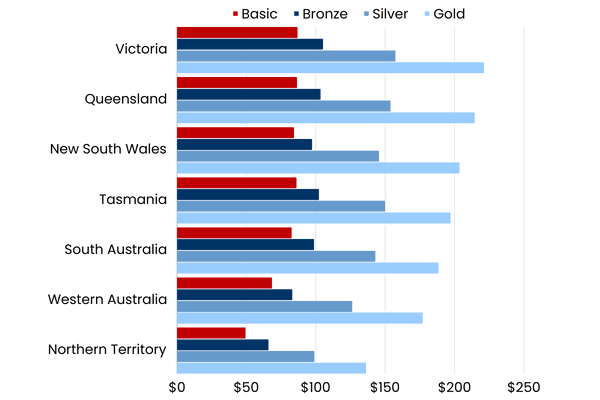
Source: finder.com.au
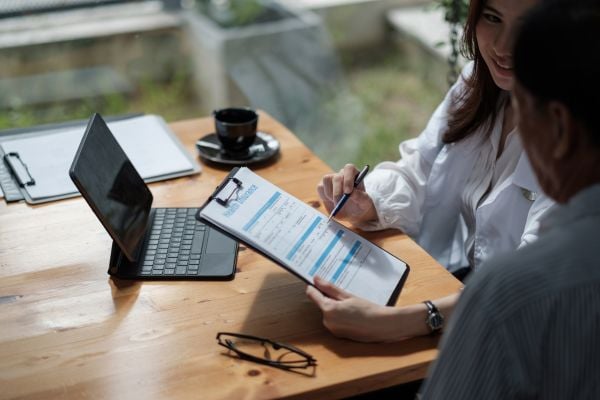
How does the Medicare system work in Australia?
Medicare is public health insurance administered by the Australian government's Department of Human Services, providing free or subsidised medical services. It covers all Australian and New Zealand citizens, permanent residents, and those arriving from other countries (with reciprocal agreements).
Medicare includes public hospital costs, GP visits, physiotherapy, community nurses and dental services for children, and access to the Pharmaceutical Benefits Scheme (PBS) for subsidised medical prescriptions.
To sign up, simply complete a Medicare enrollment form and mail or email it to Medicare Enrollment Services with your supporting documents.
About private health insurance
Private health insurers offer a range of health insurance plans to complement Medicare. They generally provide access to services not fully covered by Medicare, such as private hospital treatments, dental care and optical services.
Please note that if you arrive in Australia with a pre-existing condition, you may have to wait twelve months before a private insurance company will cover it.
Here are some common types of Australian health insurance plans:
- Hospital cover: the cost of hospital accommodation, surgeries, and related medical treatments in private hospitals. It may also include benefits for ambulance services.
- Ancillary cover: non-hospital services, including dental, optical, physiotherapy, chiropractic, and other allied health services.
- Ambulance cover: a standalone policy sometimes included in health insurance plans. It covers the cost of emergency ambulance services, which Medicare does not cover in some states and territories.
- Overseas Visitors Health Cover (OVHC): for temporary residents, such as international students and short-term visitors.
- Family cover: designed for the healthcare needs of your whole family, including parents and dependent children; it is often paid as a single premium.
What is the average life expectancy in Australia?
For men
81 years old
For women
85 years old
Source: The World Bank Open Data
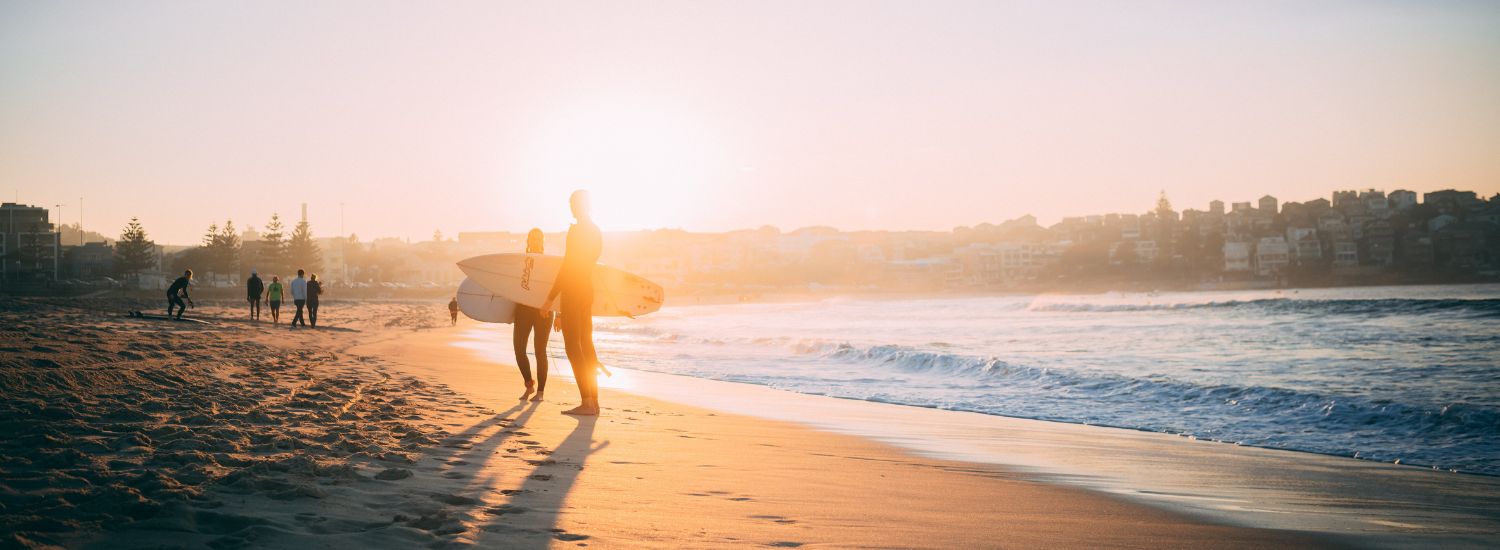
Advice from expats: what is it like to live in Australia?
Moving to Australia is a dream for many; full of sunshine, friendly locals, stunning landscapes and adventures. So, what better way to understand the true expat experience than by asking some brand new Australian immigrants who used our services to help make their dreams become a reality? Here is what they had to share about their new lives Down Under:
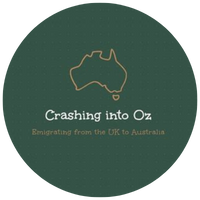
"Research everything from school catchment areas to house prices in different suburbs of your chosen state, and what work is out there for your skills and qualifications (and whether or not you need to get these transferred to Australian recognised qualifications).
Once you have done that, you can start on the logistics, like flights, getting pets out here and, of course, any possessions you can't leave behind! Preparation is key, but in stages. Don't leave everything until the last few months. Once you have decided to move, start preparing. It'll feel less overwhelming that way and will ensure you stay excited about your big adventure!"
K and T Crashley from Crashing into Oz
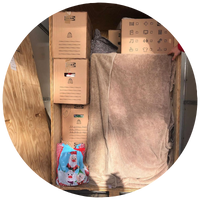
"If you have a leaving date in mind, give yourself plenty of time and pay the deposit for the MoveCube®. I booked mine two weeks before we left, and it wasn't enough time. My mum and dad loaded our MoveCube® for us, and I had to do the inventory from a notepad while I was in Australia and my boxes were in the UK.
If you have any questions about the MoveCube®, call Seven Seas Worldwide. Their customer service was brilliant the other day when I needed help using the correct terminology to satisfy Aussie customs without listing every sentimental item inside a box. Just making that quick phone call made all the difference."
Tate, Harry, Miley and Tilly from Married Moving to Oz
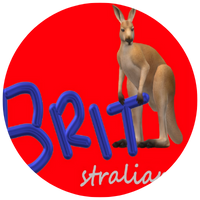
- "Swap your .co.uk email address for a .com email address. You'll be taken more seriously when you apply for jobs or send an important email.
- Be prepared for a career change and keep an open mind when applying for jobs. Many of us define ourselves by job titles, but Australia might do things a little differently from what you're used to, so you may end up working in a different capacity or a new field altogether.
For example, I was a journalist for Sky News in London, but when I moved to Australia, I ended up working in gold mines in the outback. Enjoy the journey!
- Try not to overload yourself when applying for visas, and don't be afraid to decline invitations if you need to get stuff done.
Be mindful that applying to live and work in another country can be stressful, not just because the application process itself can be lengthy and require lots of research, but you will also need to work out where you want to live and how you are going to get all your belongings over there."
Anna from BRITstralian
Once you have decided to move, start preparing. It'll feel less overwhelming that way and will ensure you stay excited about your big adventure!
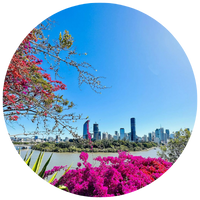
- "Use a migration agent if you can. It'll save time and stress, and although you have to pay for the luxury, we looked at it as an investment to help achieve our dream!
- Trust the process. You're not going to get set up in a new country overnight. For example, don't stress if your Medicare card hasn't arrived within the time frame they said it would. Things take longer here, and everyone is much more laid back.
- Research an area you think you'd like to live in. This may initially be just the city you want to move to, but once that decision is made, research schools and accommodation costs in different suburbs around that city.
- Use YouTube and Instagram to find out what living in Australia is like. So many people have made the move, and some great videos have been made on assimilating into Australian life.
- Sell as much stuff as you can before you leave. Not only will it allow you to ship a smaller container or MoveCube® over, but it will also allow you to start fresh when you arrive.
We used a Medium MoveCube®, which was perfect for us as we didn't need to ship any furniture, but it allowed us to send over our personal effects without paying for a bigger container.
- If you can, break up the journey. We spent three months in South East Asia on the way over and loved every minute. The kids learnt so much from the different cultures, and by the time we arrived in Australia, our MoveCube® was already here! If you do travel, pack half of what you think you'll need! We had two 55l backpacks and one 90l wheeled bag, which was still too much.
- Arrive with an open mind. Australia is not England, and there are so many differences. I think people compare the two too often and while some things are better in the UK, we wouldn't change our decision. We love it here!"
The Freemans from Brixham to Brisbane
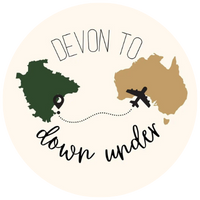
"Sort what you need, want or can recycle or donate, as we didn't want to transport too much. The MoveCube® plastic floor size sheets are really helpful, and we marked this out in our garage to help with preparation.
In terms of boxes, we used moving boxes, which fit well, and vacuum bags for clothes. It was also nice to know Seven Seas Worldwide were only a call away if we had any questions."
Sarah and Bill from Devon to Down Under
UK expats achieve dream life Down Under with the help of a MoveCube®
Nick, Jody and family, aka The Great Emigrate on YouTube, recently moved from the UK to Brisbane, Australia. Watch as they welcome the safe arrival of their belongings in a MoveCube®, unload, and talk through their entire Seven Seas Worldwide removal experience.
The UK nationals discuss how helpful and friendly our drivers were in the UK and Australia, their site visit, costs and much more. “We share our experience to provide insights and tips for anyone considering an international move with Seven Seas Worldwide.”
From generating a quick free quote to the happy day they were reunited with their precious belongings, The Great Emigrate enjoyed an end-to-end, transparent removal experience thanks to our expert team and global network of depots and drivers.
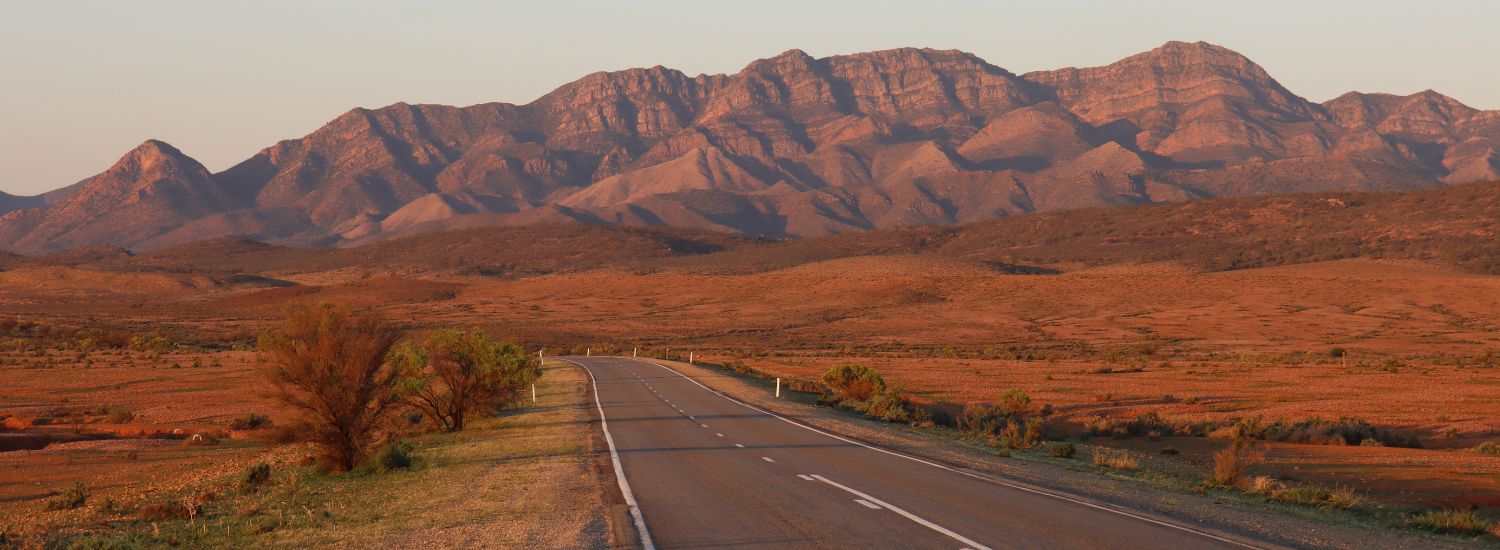
A quick guide to transportation in Australia
Australia is a vast land. The distance between Perth on the west coast and Brisbane on the east coast is a staggering 4,316 km (2681 miles) by car, a 5-hour and 25-minute flight, or 37 days by foot! There is so much country to explore, only 53% of Australians have a current passport, compared to 76% of Brits, 70% of Canadians, and 70% of New Zealanders.
Getting around in Australia
Getting around Australia varies depending on your state, city or town. All Australian states offer their own integrated Public Transport Card that can be used on buses and trains and, in some states, trams, subways and ferries.
Some examples of public transport cards:
- Sydney/New South Wales: Opal
- Melbourne/Victoria: Myki
- Brisbane/Queensland: Go Card
- Perth/Western Australia: SmartRIDER
- Adelaide/South Australia: metroCARD
- Tasmania: Greencard
- Canberra: MyWay
Cards are available at most local convenience stores, 7-Elevens or public transport stations. You can also register online, which is handy if you lose your card and need to transfer your remaining balance. You can make top-ups online, using an app, at a station service desk or a station ticket machine. Discounts are available for students and some workplaces, so ask your employer if this applies to you.
Car travel is widespread due to the enormous distances between towns and cities, especially in rural states with less public transport, like Western Australia, South Australia, and the Northern Territory. Unless you come from the USA, Japan, New Zealand, Canada, the UK or European countries with similar driving laws, you will only be able to use your current driver's license for the first three months — you will then need to apply for an Australian license.
Given the size of the country, domestic flights are another quick and efficient way to travel. Popular Australian airlines include Qantas, Virgin Australia and Jetstar.
For a unique travel experience, consider renting a campervan or motorhome. Doing so provides transportation and accommodation, allowing you to freely explore diverse landscapes and camping sites.
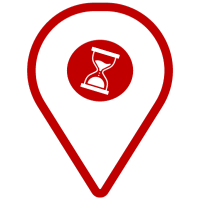
Australian history timeline
Pre-1600s
Indigenous Australians, comprising diverse cultures and languages, have inhabited the continent for at least 65,000 years, developing unique societies and art.
1600s
In 1606, Dutch explorer Willem Janszoon encountered the northern coast of Australia. Subsequent explorers, including Dirk Hartog and Abel Tasman, contributed to European knowledge of the continent.
1700s
Captain James Cook claimed the eastern coast for Britain in 1770. The First Fleet, led by Captain Arthur Phillip, arrived in 1788, establishing a penal colony at Botany Bay (now Sydney).
1800s
Convict transportation continued with exploration expanding inland. In 1851, gold discoveries in Victoria and New South Wales triggered a significant influx of immigrants, boosting economic growth.
1900s
On 1st January 1901, the British Commonwealth of Australia is formed. And in 1986, the Australia Act ended the remaining constitutional links between Australia and the UK.
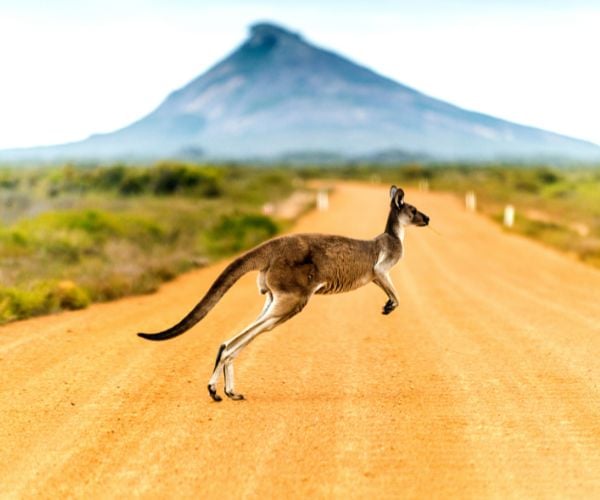
Australian culture: values, traditions and more!
Depending on where you're from, Australian customs and quirks might take a while to get used to. There are similarities to other English-speaking countries like the UK, USA and Canada, but there are also significant differences:
- Laid-back lifestyle and attitude: Australians are known for their friendly demeanour and informal approach to life. The concept of "mate-ship" emphasises camaraderie and loyalty. Don't be surprised if a bank teller, police officer or postman casually calls you "mate" and strikes up small talk upon first meeting.
- Indigenous heritage: Aboriginal and Torres Strait Islander peoples of Australia have inhabited the lands for tens of thousands of years and profoundly impacted Australian culture. Dreamtime stories, art, and connection to the land remain essential aspects of Indigenous identity. Festivals and ceremonies, such as NAIDOC Week and Sorry Day, let Indigenous Australians share their cultures with the broader community.
- Check your plugs: Australia uses type I electrical outlets and plugs. It has three flat pins in a triangular configuration. The two top pins are angled, and the socket has a corresponding triangular shape. The standard voltage is 230V, and the frequency is 50Hz. You can use plug converters for a while on arrival, but using them for long periods is unsafe. Replacing your electrical appliances on arrival is a wise decision.
- Sports culture: Aussies love sports! In particular, cricket, rugby, and Australian Rules Football (AFL). Sports are prominent in Australian society and contribute to the nation's sense of identity, providing a source of pride and community spirit. Significant events like the Melbourne Cup and the AFL Grand Final capture national attention.
- Be prepared for laughs!: Australians are known for their love of humour, often characterised by wit, sarcasm and playful banter. Their self-deprecating humour, where individuals playfully make fun of themselves, is seen as a way to break down social barriers.
10 surprising facts about Australia
- Australia is home to several pink-coloured lakes, including Lake Hillier in Western Australia. The cause is believed to be a combination of high salt concentration and blush-hued algae.
- The Dingo Fence is the longest in the world, stretching over 5,600 kilometres (3,480 miles)! It was initially built to keep dingoes away from farmland and serves various agricultural purposes.
- UNESCO World Heritage Site, the Great Barrier Reef, is the world's largest coral reef system. The breathtaking natural wonder is so vast it can be seen from space!
- Melbourne, known for its multiculturalism, has the largest Greek population of any city outside of Athens.
- The Daintree Rainforest in Queensland is considered the world's oldest tropical rainforest at around 180 million years old, which is older than the Amazon Rainforest.
- Australia is the home to iconic animal species not found anywhere else on Earth, including kangaroos, koalas, platypuses and wombats.
- Australia is often called the "island continent" since it's the world's largest island and smallest continent.
- "The Outback" makes up most of the country — a remote and arid region with sparse population density, home to unique landscapes and wildlife.
- Australia is home to the world's longest golf course, Nullarbor Links, spanning over 1,365 kilometres (848 miles) across the Nullarbor Plain.
- While it has a rich geological history, Australia is the only continent without active volcanoes.
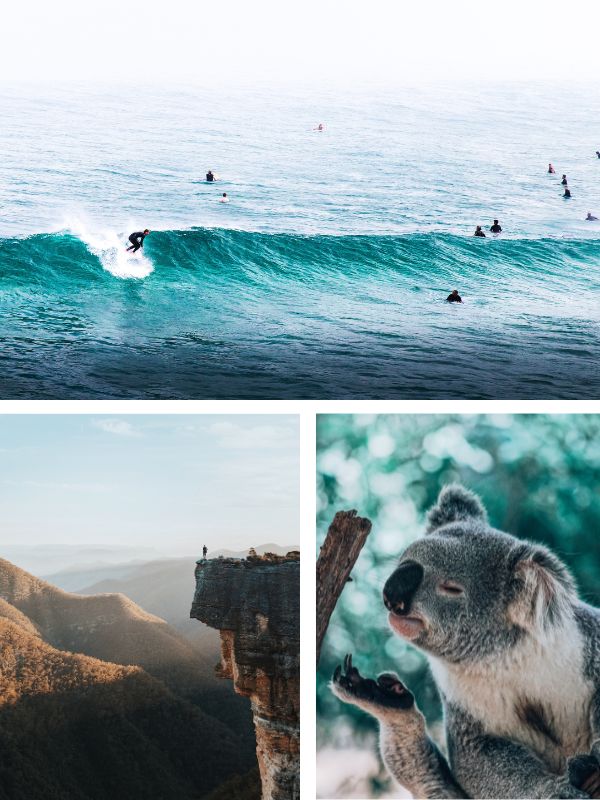
Top 4 must-see Australian landmarks
Now that you've settled into your fabulous new life Down Under, you have all the time in the world to explore this sprawling, captivating country! Millions worldwide flock to Australia's iconic landmarks yearly. So, we've compiled the four most popular:
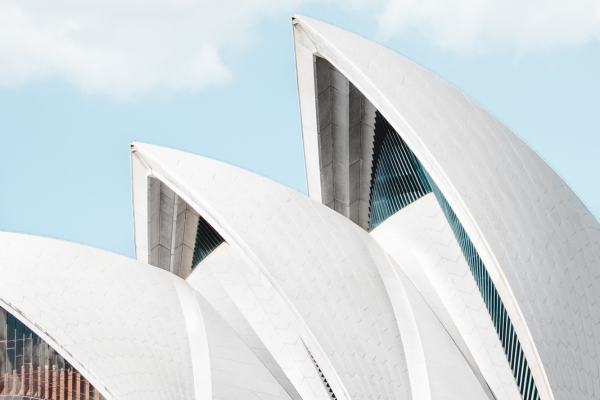
1. Sydney Opera House, New South Wales:
The Sydney Opera House is a striking symbol of Australia and a masterpiece of modern architecture, with its distinctive sail-like design gracing the Sydney Harbour. The venue hosts a variety of performances and events by worldwide artists.
Designed by Jørn Utzon, construction took fourteen years before the grand opening in 1973.
There are walking tours, backstage tours, school tours and tours for less able bodies to choose from. Why not finish off your day of discovery with a cocktail at the Opera Bar?
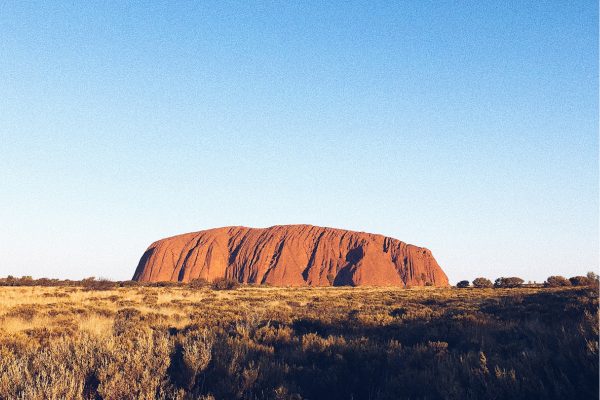
2. Uluru, Northern Territory:
Uluru, formerly known as Ayers Rock, is a massive sandstone monolith in the heart of the Northern Territory's Red Centre. It's most famous for its changing colours throughout the day, especially during sunrise and sunset.
The iconic rock is believed to have formed around five hundred million years ago. It's sacred to the Indigenous Anangu people and central to spiritual Dreamtime stories.
Climbing Uluru is discouraged due to its cultural significance. However, visitors can explore the base to learn about its history and take pictures.
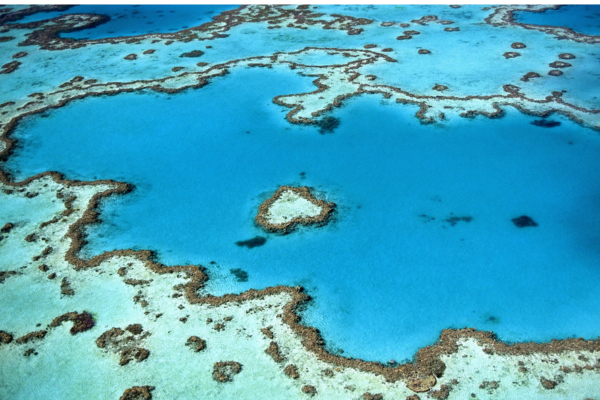
3. The Great Barrier Reef, Queensland
The Great Barrier Reef is the world's most extensive coral reef system, stretching over two thousand kilometres along the Queensland coast.
The reef is a biodiversity hotspot home to almost three thousand individual reefs and nine hundred islands.
Coral gardens, including the iconic staghorn and plate corals, create a dazzling mix of colours beneath the clear waters. Conservation efforts are underway to preserve the reef's ecological integrity and vital role in global biodiversity.
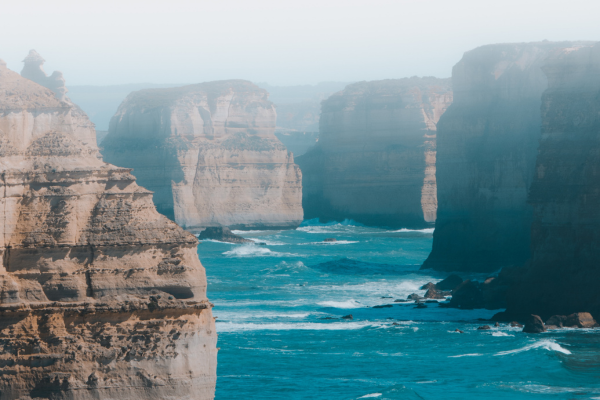
4. The Twelve Apostles, Victoria:
The Twelve Apostles are individual limestone formations rising from the Southern Ocean along the dramatic coastline of Great Ocean Road. Despite the name, only eight apostles remain today, a testament to erosion's powerful forces.
The Apostles were originally limestone caves, but constant waves shaped them into towering stacks, which continue to alter this stunning natural wonder.
Explore the Twelve Apostles Visitor Center to learn about the geological processes that shaped the coastline and the history of the Apostles.
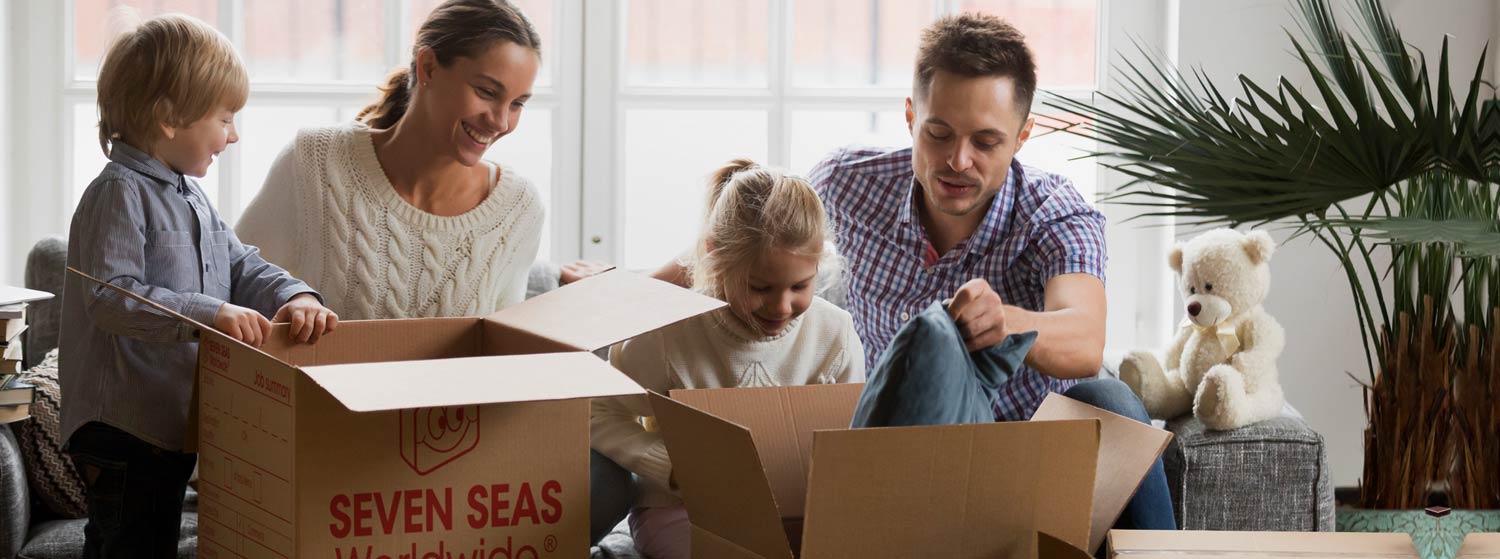
How international removals to Australia work
Seven Seas Worldwide has shipped home removals worldwide for over 25 years. From Perth to the Gold Coast, we'll safely ship furniture, boxes, bags, bicycles and more wherever you settle in Australia. Our knowledgeable team, free packing supplies, complimentary storage and multilingual customer service set us apart from other international removals companies.
What is the MoveCube® moving pod?
You can ship household goods inside our sturdy moving pod, the MoveCube®. It acts as your own dedicated shipping container, delivered to your door for you to fill with kitchen appliances, furniture, sports equipment, boxes, bags and more!
To help you pack your belongings securely, each MoveCube® order comes with a free Starter Pack containing a measuring tape, a box cutter, a marker pen, a roll of parcel tape, and a tape dispenser. Plus, three plastic sheets you can lay on the floor to work out what will fit inside a Large, Medium or Small MoveCube®.
You can order as many MoveCubes® as needed to suit the size of your removal. Please note that if you order more than one MoveCube®, they may arrive on separate days. Start your exciting overseas adventure today with a free instant quote and get a transparent cost breakdown of the entire shipping to Australia process.
Another benefit of using our international removal service is that we handle the Australian customs process. However, there are a few things you should be aware of when moving household items to Australia.
- Like all countries, Australia has a list of banned items to protect its people and environment. Check our Prohibited Goods page before you pack to avoid delays or fines.
- Ensure all your belongings are clean and dry before packing, especially outdoor clothing, garden furniture and sports equipment. You will incur fines and delays if Australian quarantine officials find dirt or organic matter on the items in your removals shipment. Shoes must also be clean and dry and placed at the front of your MoveCube® for easy inspection.
- Complete all your online documents and ensure your inventory packing list accurately matches what you have packed in your MoveCube®.
- Upload scans of your passport clearly showing the picture and signature pages.
- Ensure any wood, animal products or plant life and their derivatives you are shipping are not endangered as designated by CITES (Convention on International Trade in Endangered Species of Wild Fauna and Flora).
Please reference our Importing into Australia page and Australian customs declaration B534 form guide for a full breakdown of the Australian customs process.
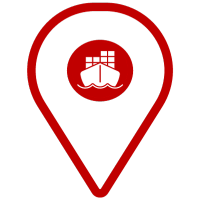
Transit times for shipping to Australia
Estimated transit times when transporting one Large MoveCube® by sea from the capital cities of our ten most popular routes to Canberra, Australia:
| Origin country | Transit time* |
| China | 69 days |
| Hong Kong | 56 days |
| Ireland | 140 days |
| Malaysia | 78 days |
| New Zealand | 73 days |
| Singapore | 78 days |
| South Africa | 96 days |
| Thailand | 95 days |
| UK | 119 days |
| USA | 110 days |
*estimated timings dependent on global shipping circumstances.
FAQs about moving to Australia for expats
To apply for an Australian visa, determine the appropriate visa type for your purpose (tourism, work, study, etc.). Next, visit the Australian government's official Department of Home Affairs website to create an ImmiAccount and complete the online application form. Then, upload the required documents, pay a fee, and submit your application.
The processing time for Australian visas varies depending on the type of visa and individual circumstances. While some visas get processed in a few days, others, especially more complex ones, can take several months.
We advise checking the Department of Home Affairs website for current processing times and factors influencing them. Lodging a complete and accurate application, including all necessary documents, can contribute to a more efficient visa processing experience.
The validity of Australian visas varies based on the type of visa issued. Tourist visas often have shorter durations, typically ranging from three months to one year. Work visas and student visas can have extended validity periods, often aligning with the duration of the work or study program.
The amount of money needed to move to Australia depends on factors like the visa you choose, your intended duration of stay, travel costs and accommodation expenses. Create a comprehensive budget before packing your bags, taking these factors into account, to ensure you have enough in the bank for the big move.
Choosing where to live in Australia depends on personal preferences, lifestyle, and career opportunities. Cities like Sydney and Melbourne offer a cosmopolitan vibe, cultural amenities, and bigger job markets. Alternatively, Newcastle, Perth, and Wollongong are more affordable and laid-back.
Australia's top 10 in-demand jobs are nurses, teachers, software developers, electricians, construction managers, carpenters, machinists, plumbers, mechanics and university lecturers.
The best universities in Australia are the University of Melbourne, Monash University, the University of Sydney and Australian National University.
Living in Australia offers a relaxed lifestyle (ideal for raising a family!) surrounded by stunning landscapes and a multicultural society. The country is known for its vibrant cities, beautiful beaches, outdoor activities and friendly locals.
While it's possible to move to Australia without a job, your most likely method of earning permanent living status is to be sponsored by an employer for an in-demand role. Non-work options include getting sponsorship from a family member or spouse or meeting the qualifications for a retirement visa.
Cats and dogs can only be imported into Australia from a list of approved countries. Your pet must also be vaccinated, fit to travel and implanted with a microchip that an ISO-compatible reader can read.
For more information, including how to complete an import application and import other animals, please reference the Australian Government's Department of Agriculture, Fisheries and Forestry.
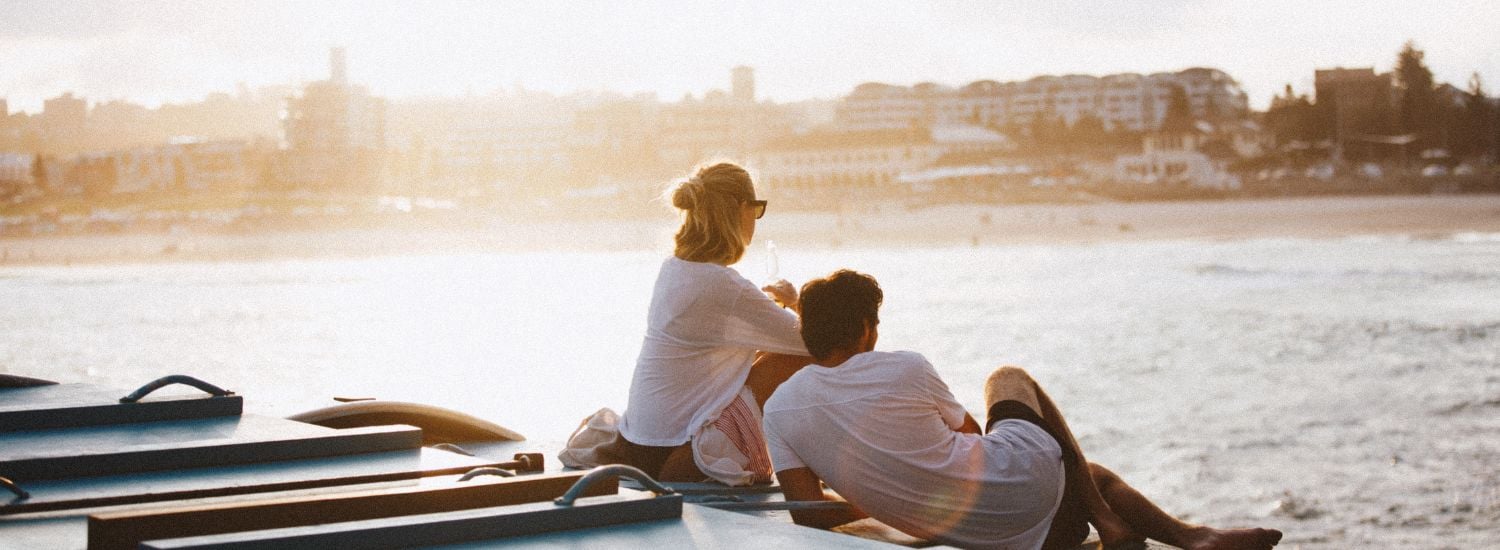
Extra resources to help with your move to Australia
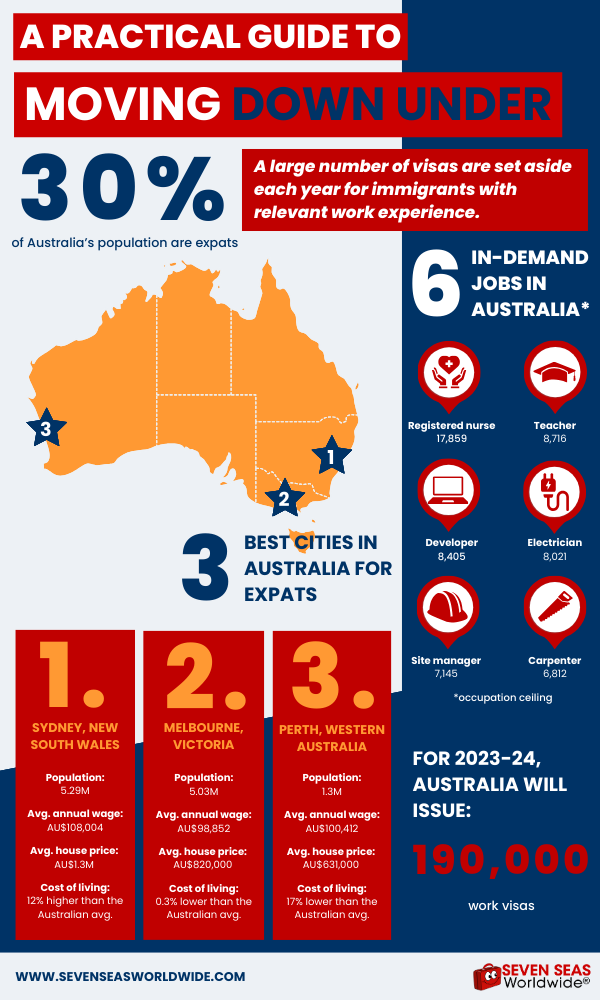
...find trusted overseas shippers to transport all your belongings to your new home.
Moving to Australia checklist
Simplify your relocation to Australia using this handy checklist:
- Plan the move thoroughly with family, friends and knowledgeable expats: before rushing to the airport, weigh the pros and cons of living in Australia.
- Research Australian visas: learn about all stages of the visa application process and choose your most likely acceptance method from the hundreds of pathways available.
- Sort your finances: determine whether you have enough cash available for you and your family to settle in Australia for a few months before securing a permanent job and home.
- Decide where to live and whether to rent or buy: carefully choose an area that suits your needs. Instead of making a large purchase like a property on arrival, consider renting first to give yourself time to acclimatise.
- Set up an account for your bills: open an Australian bank account and transfer money from your country of origin.
- Secure a job: learn about the Australian employment system, including how to job search, application etiquette, benefits and which roles are most in demand.
- Organise your children's education: enrol your kids in a nearby school unless you plan to teach them at home.
- Understand the Australian healthcare system: learn about Medicare's free and low-cost services, plus the benefits of taking out private insurance.
- Read up on your area's transport options: get up to speed on Australia's efficient and integrated public transport.
- Ensure you have a valid driving licence: check the driving regulations in your state or territory, including whether or not you'll have to apply for an Australian licence after a few months.
- Learn about Australia's past and present: gain a better understanding of this fascinating country by learning about Australia's formation, cultures, values and multiculturalism.
- Book an international removal company: find trusted overseas shippers to transport all your belongings to your new home.
